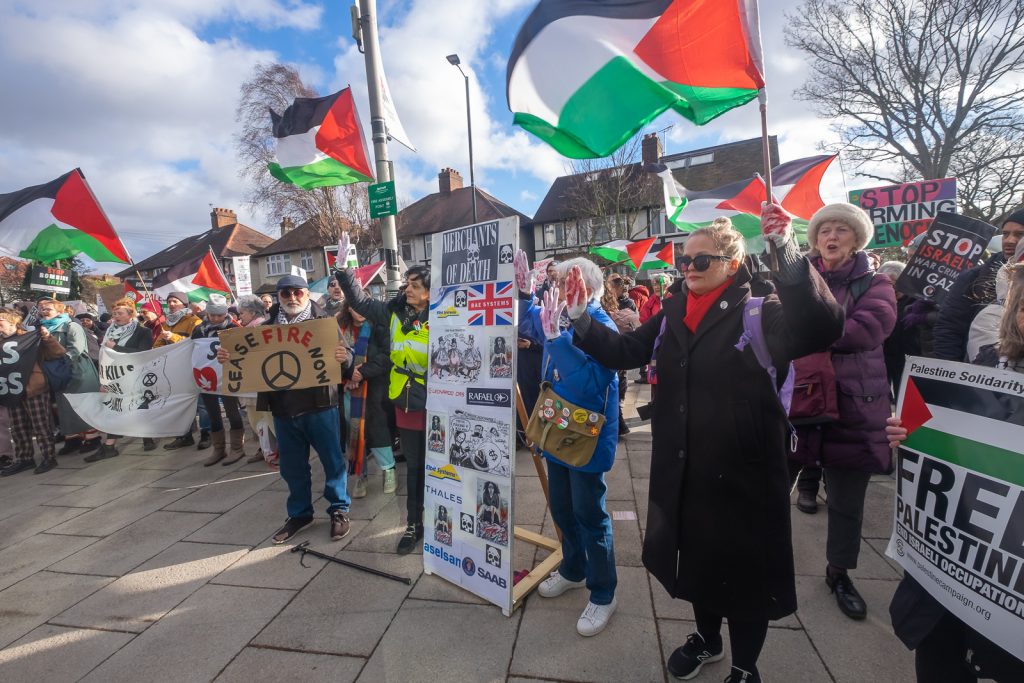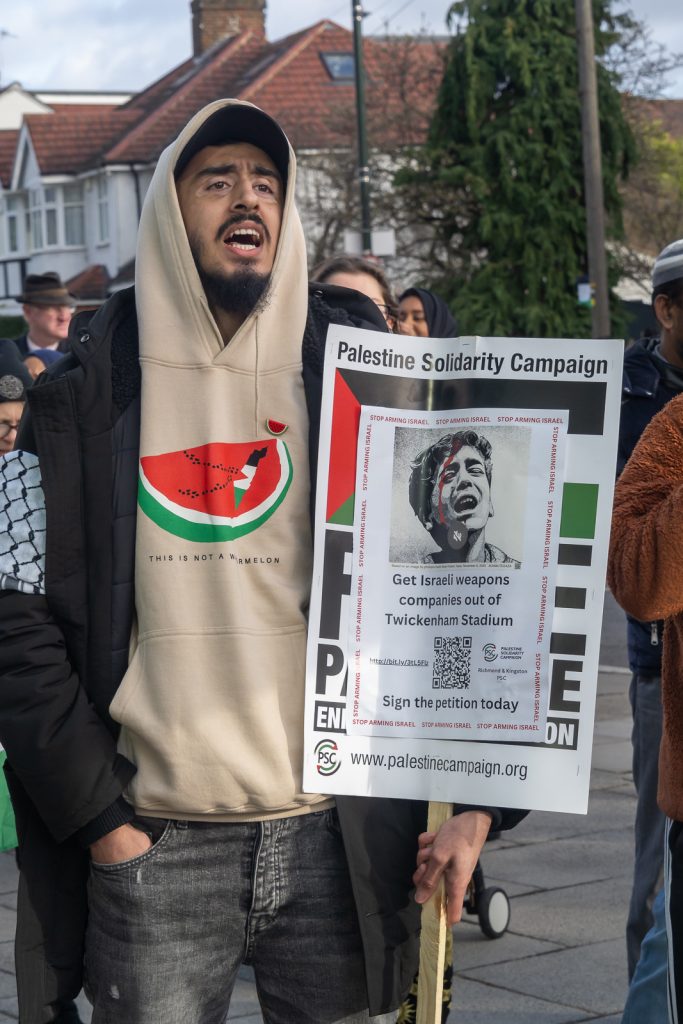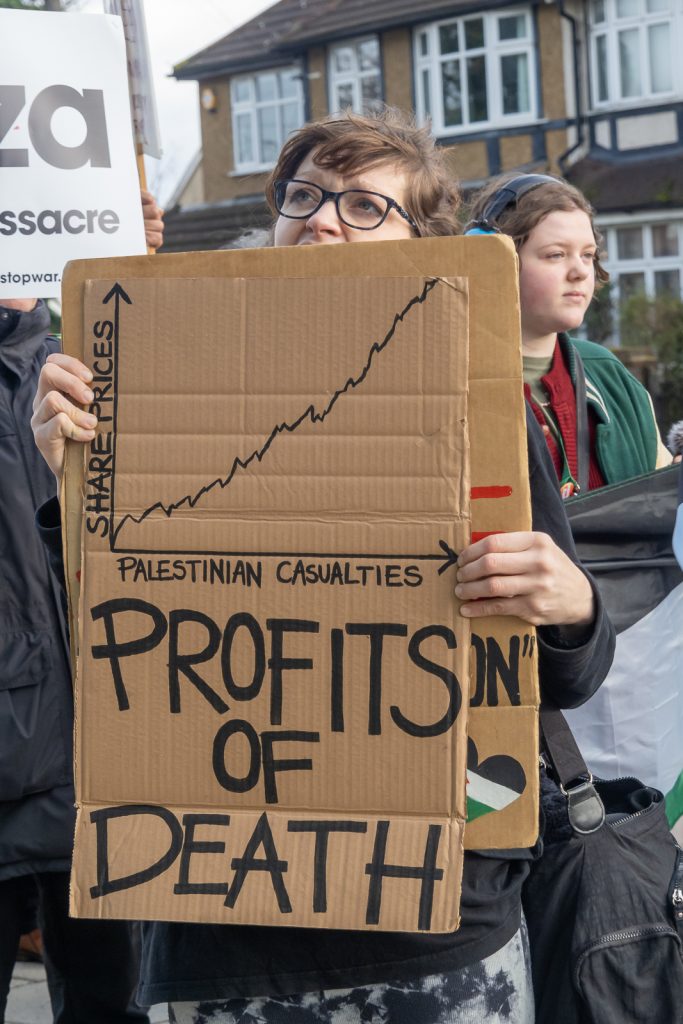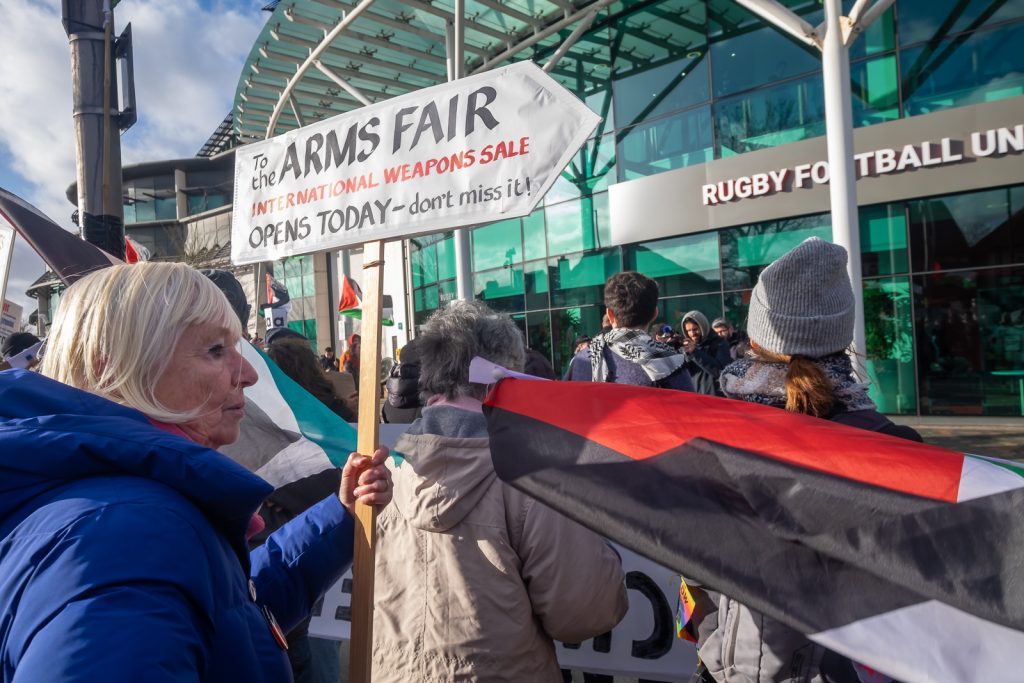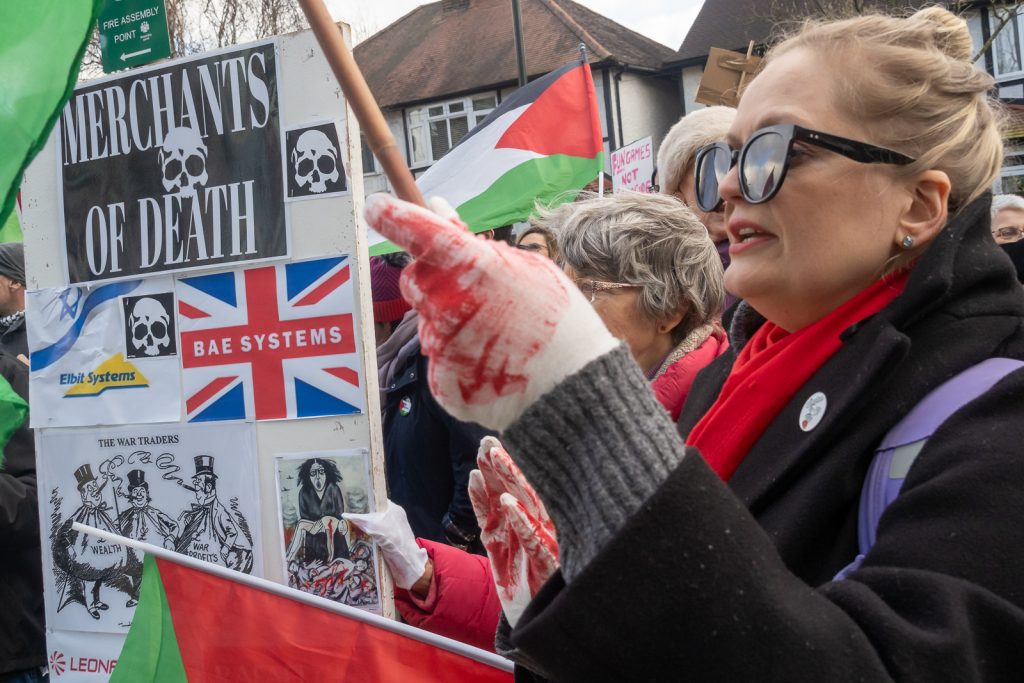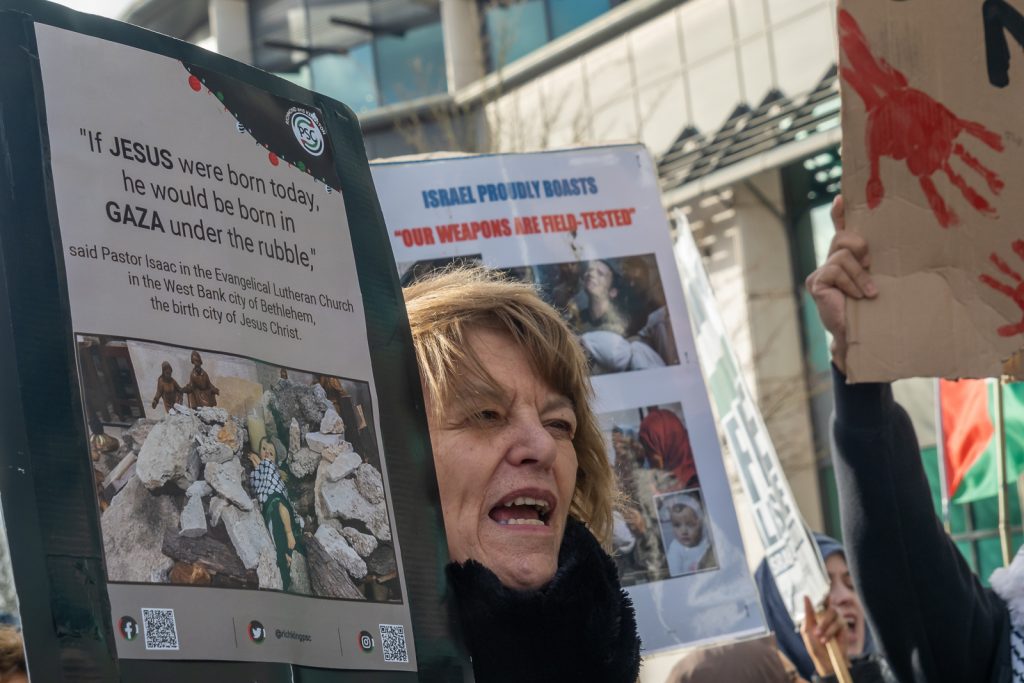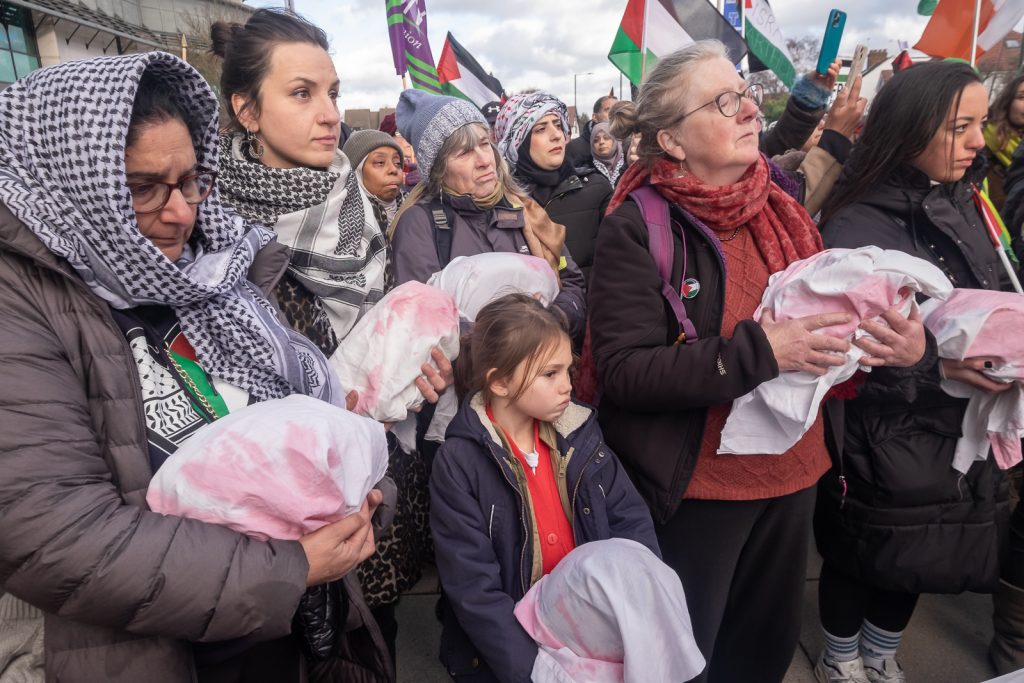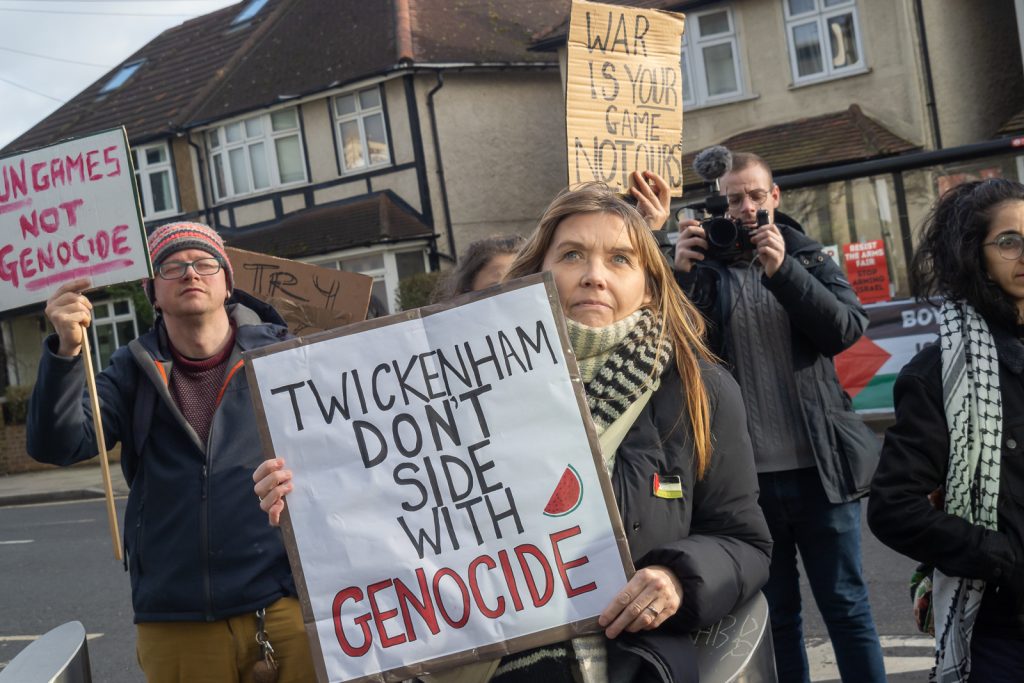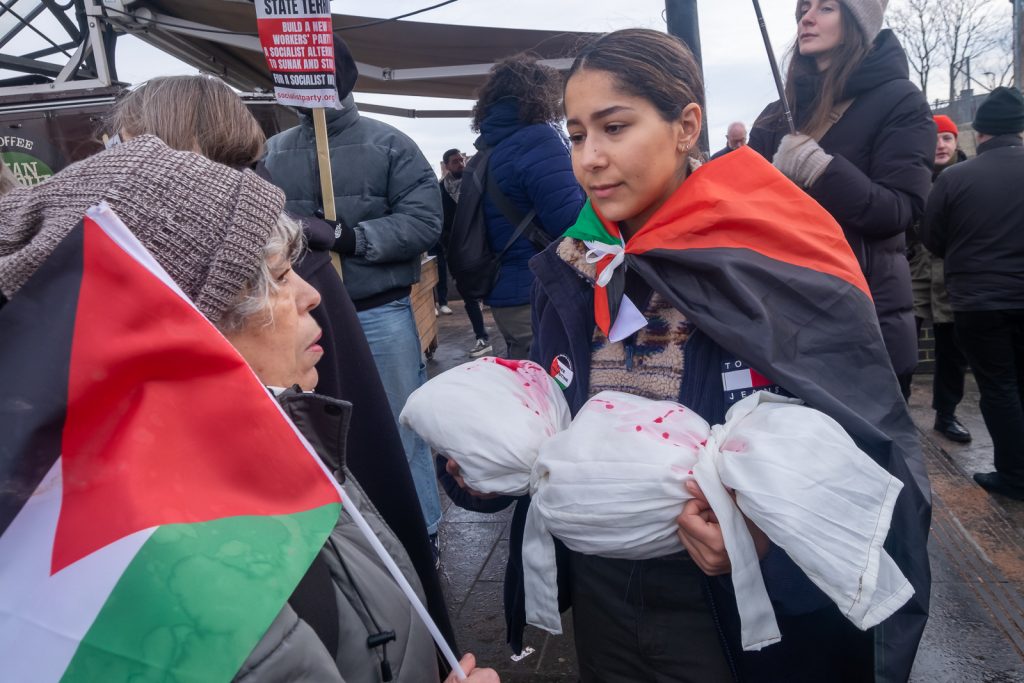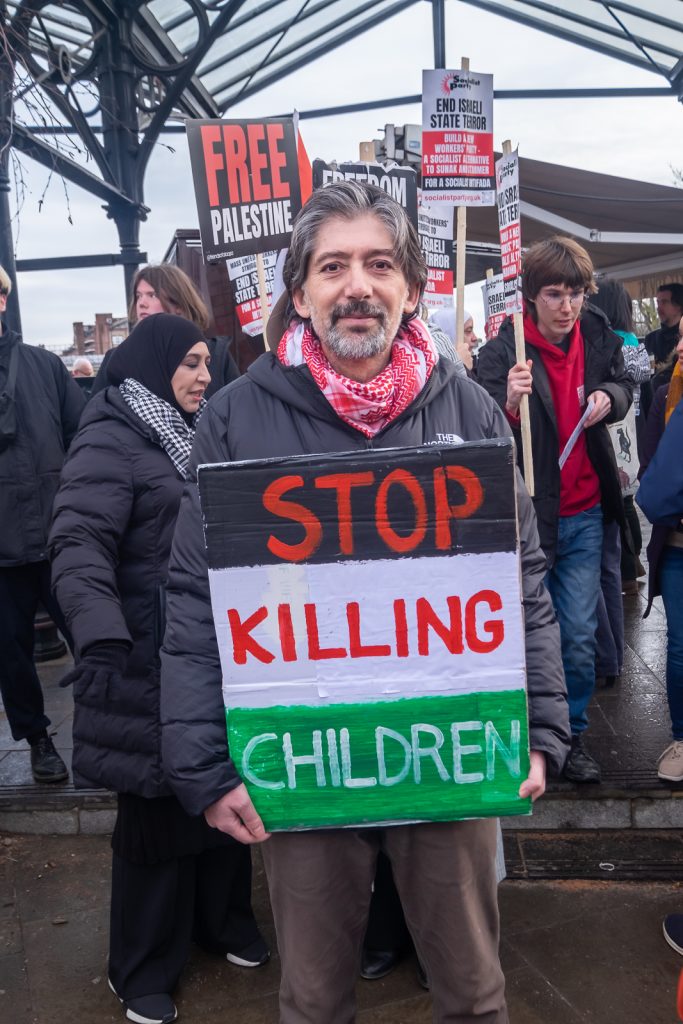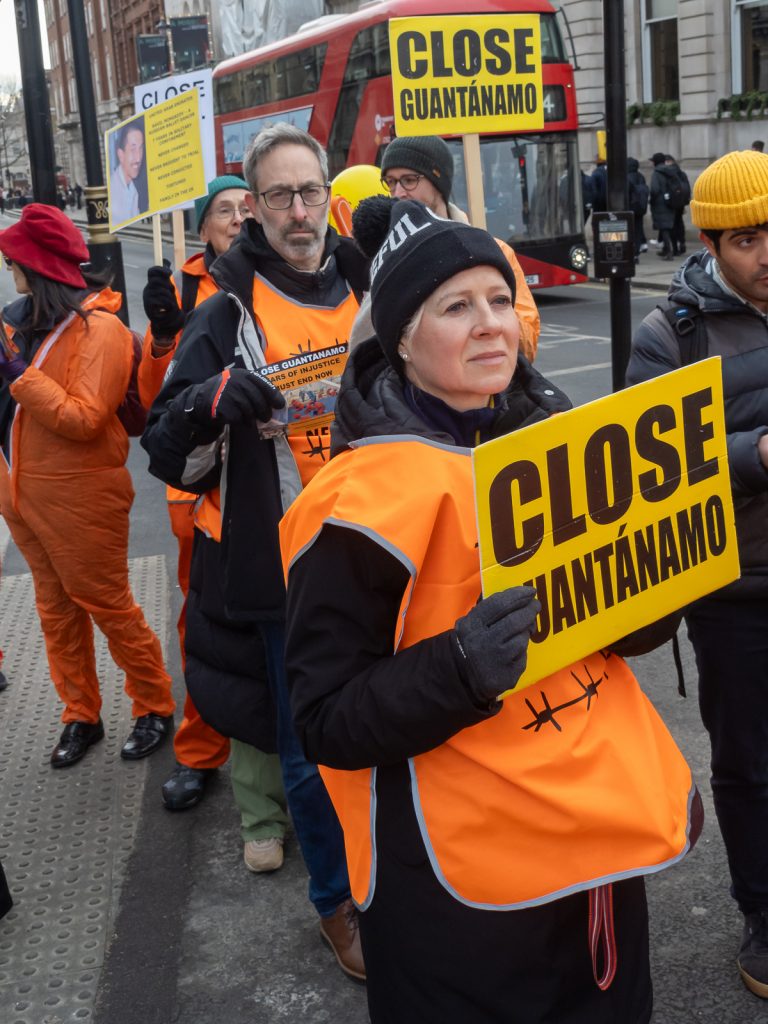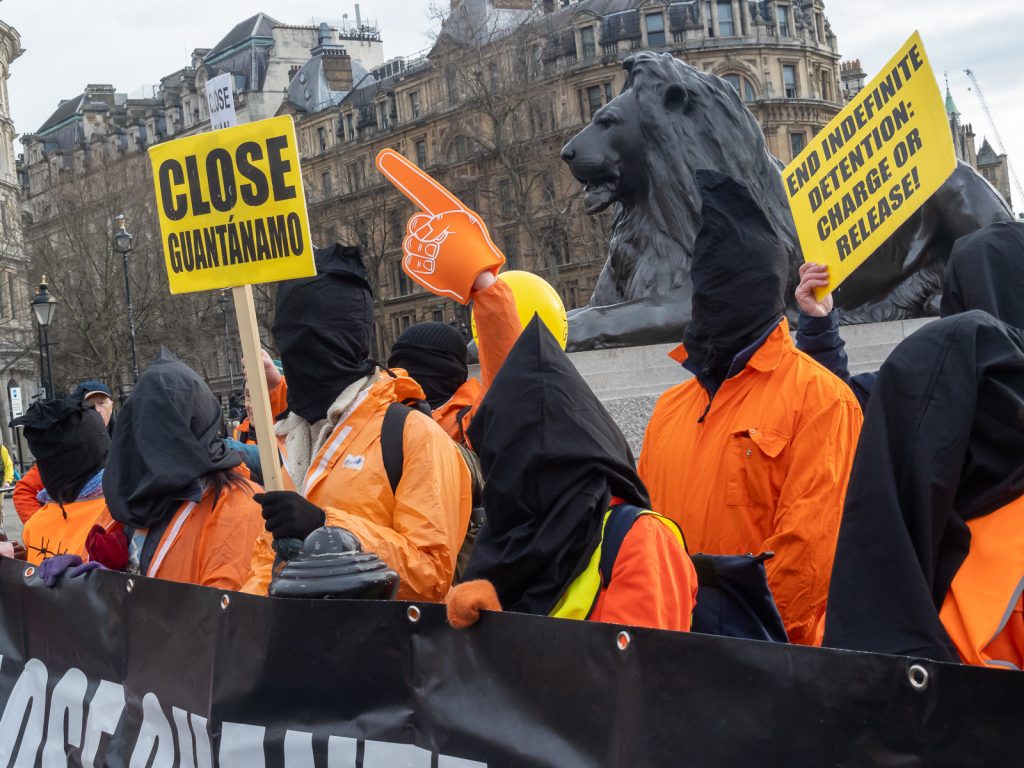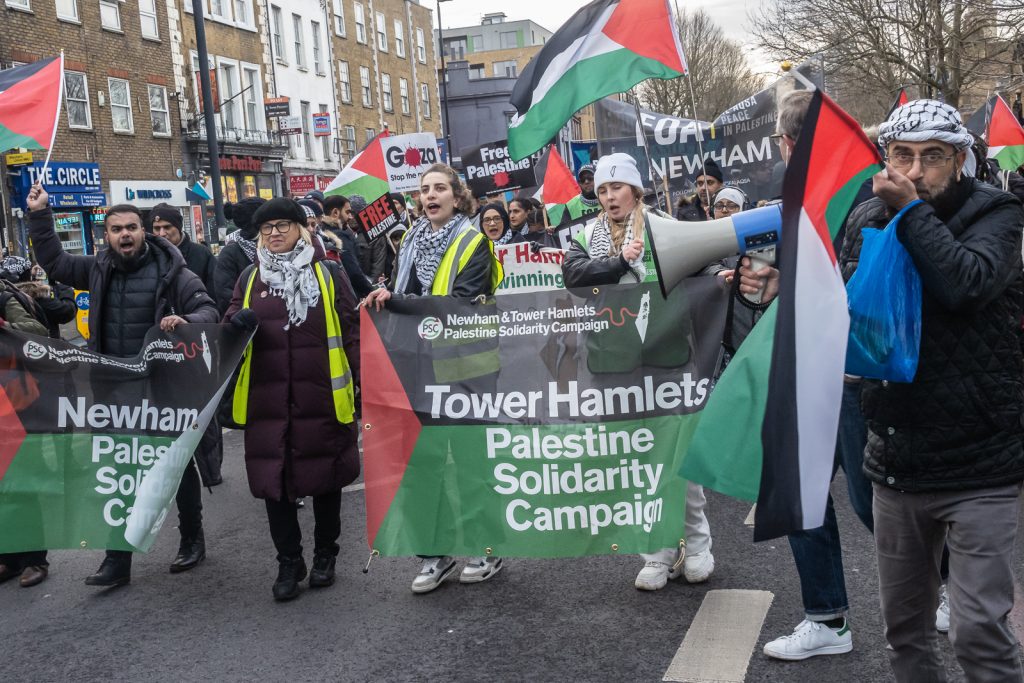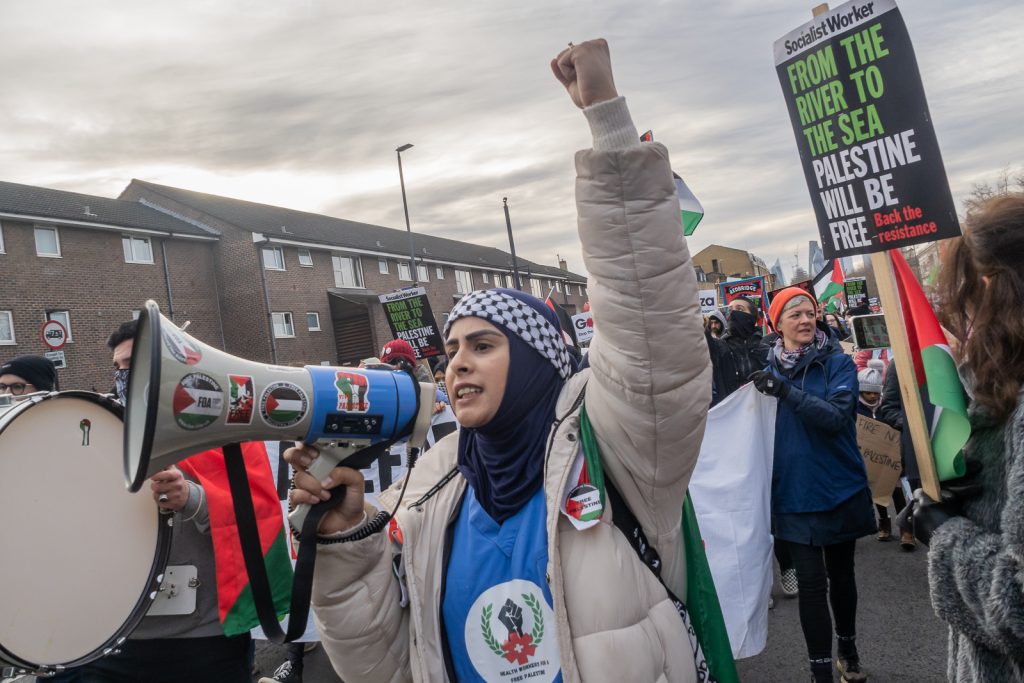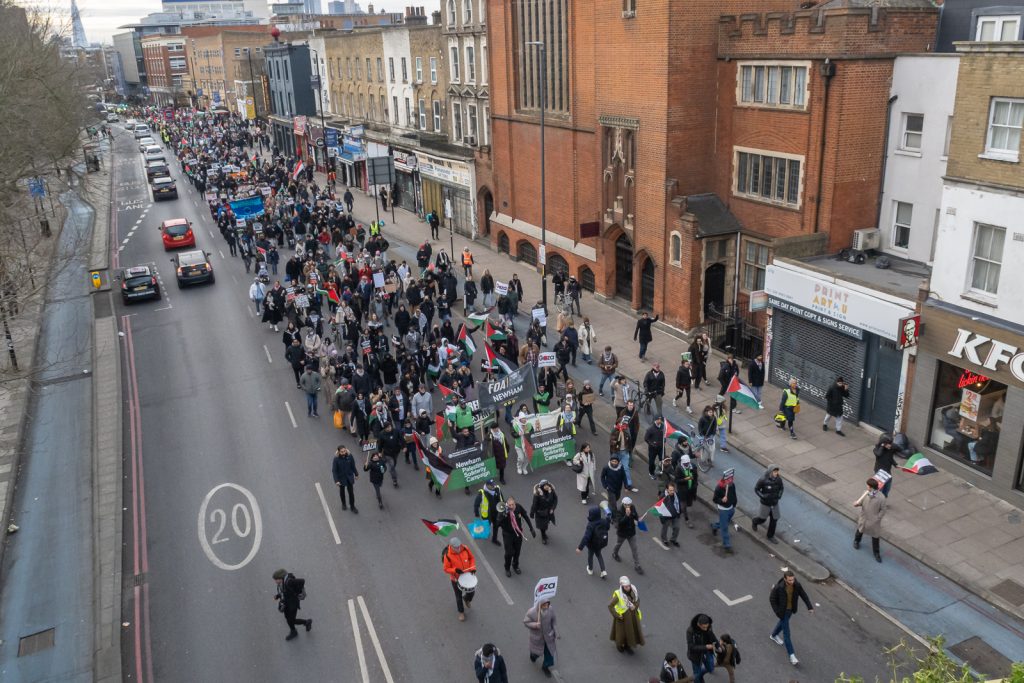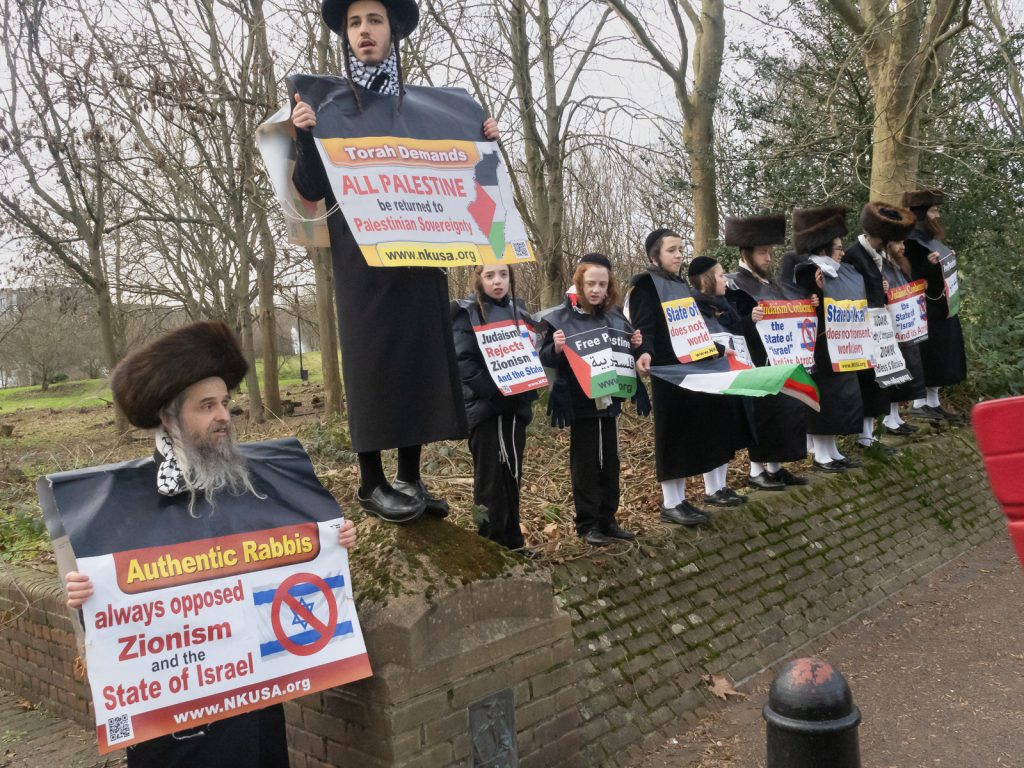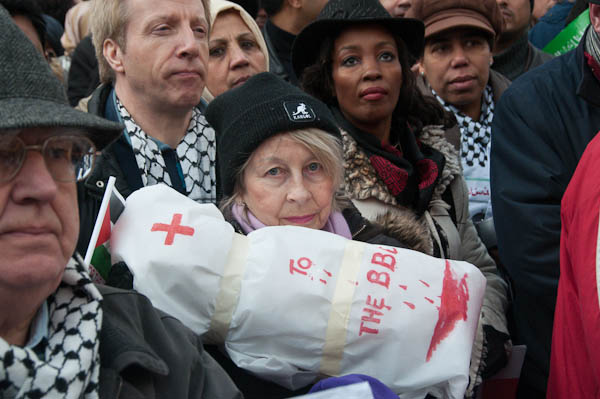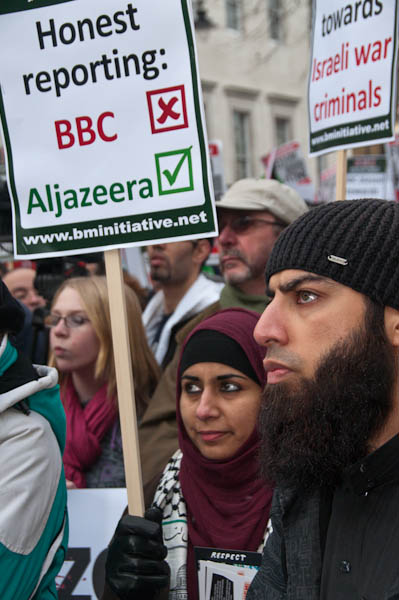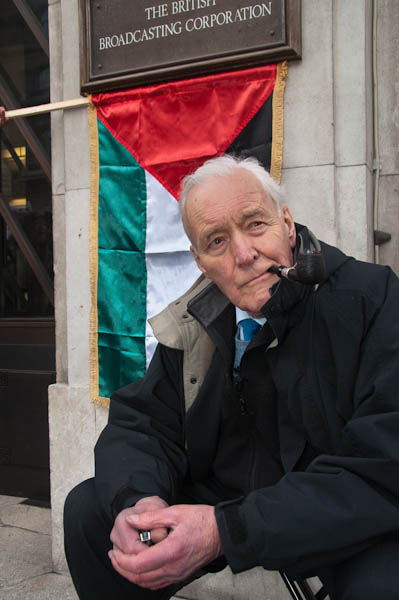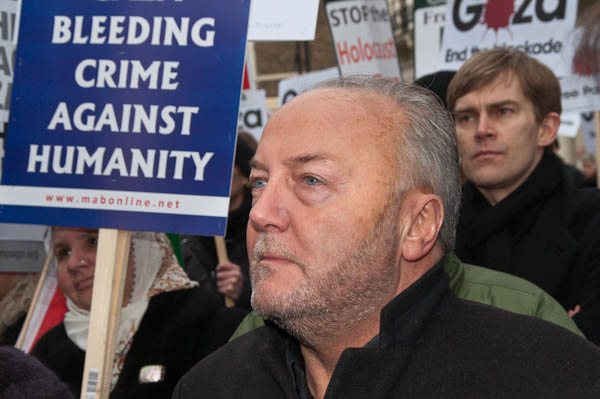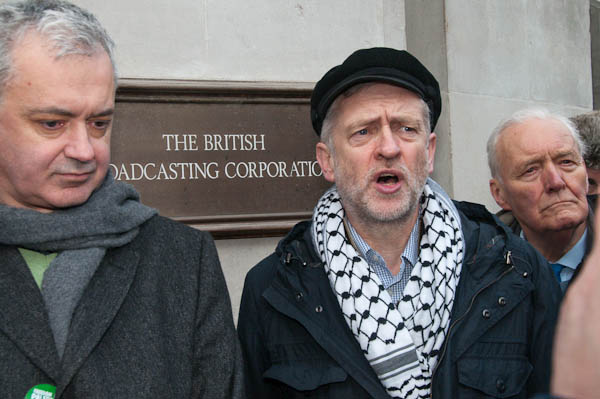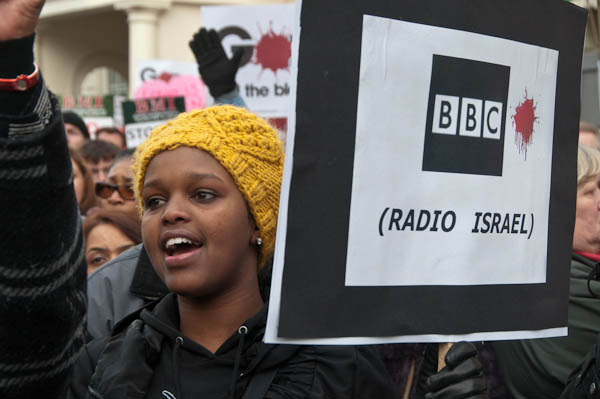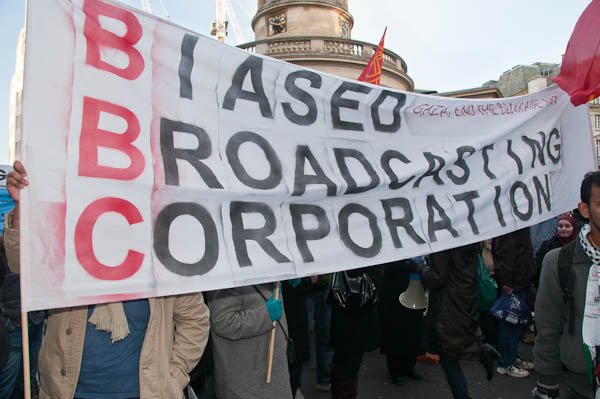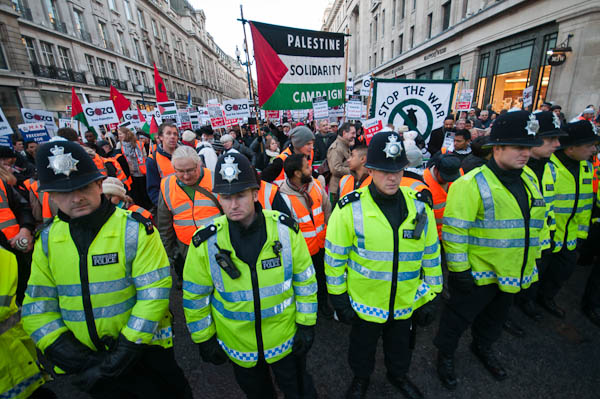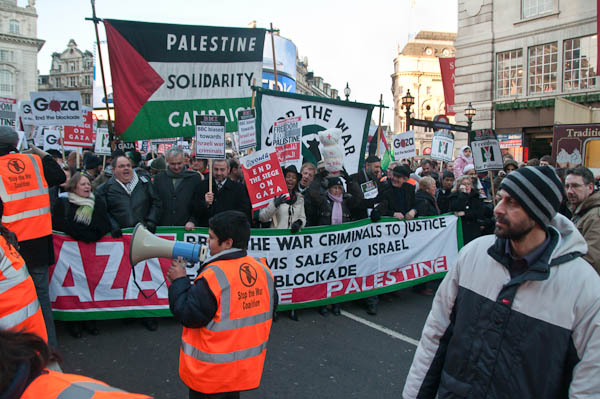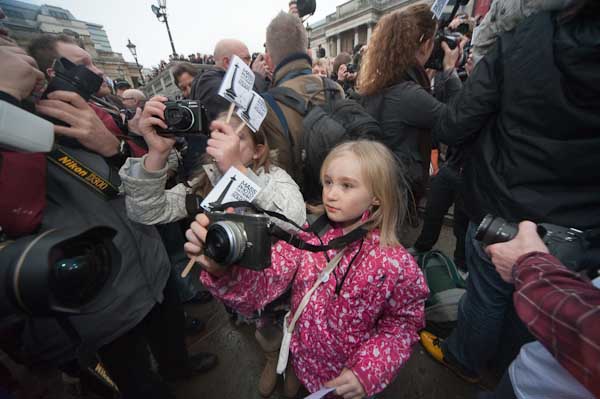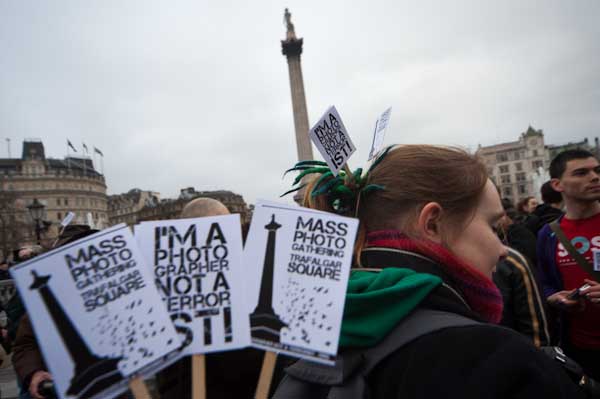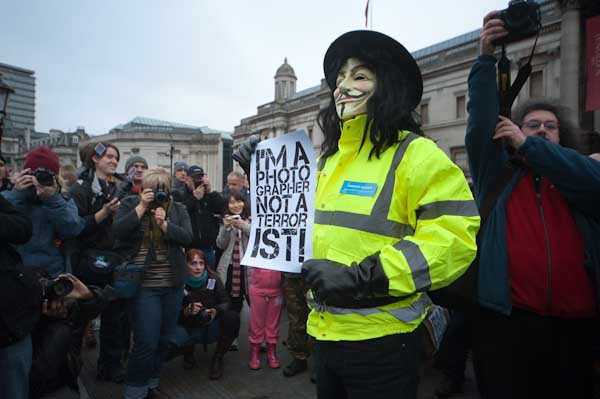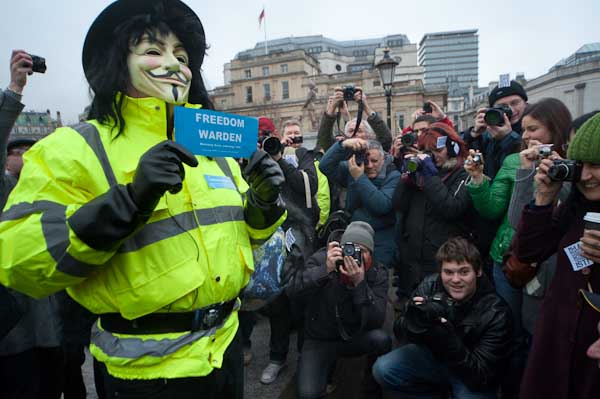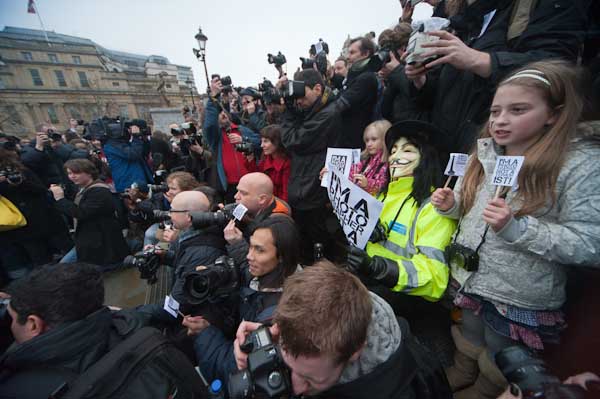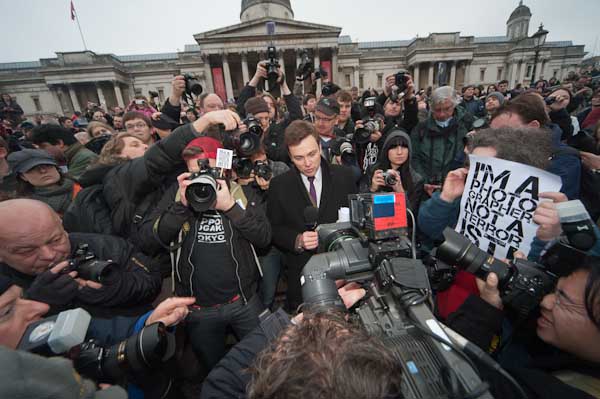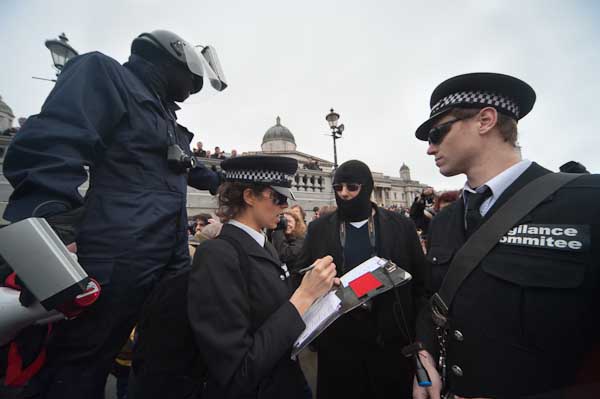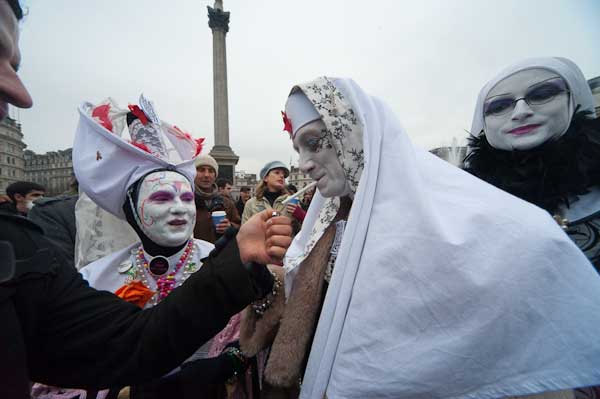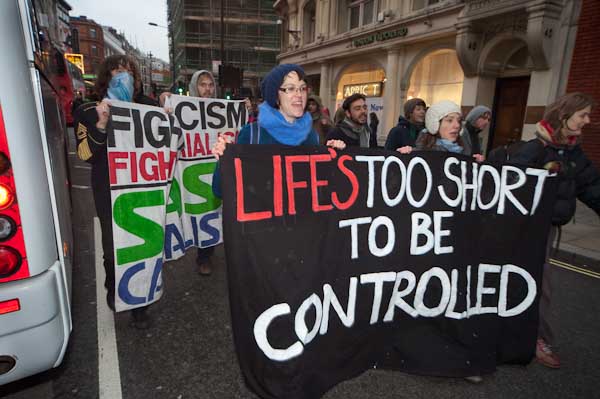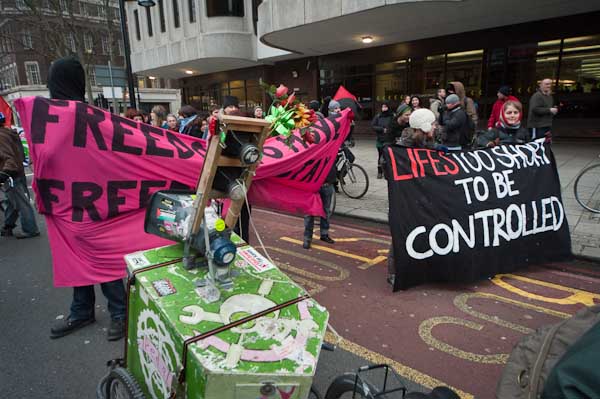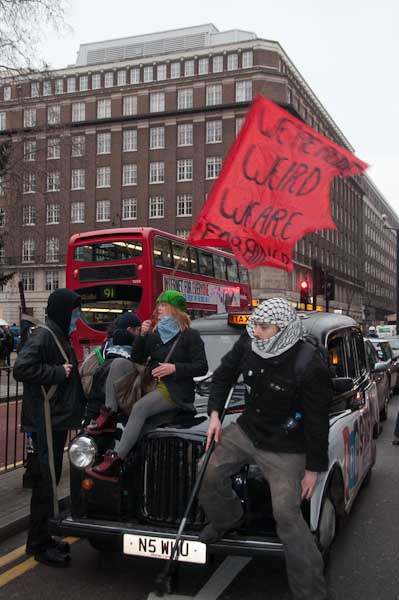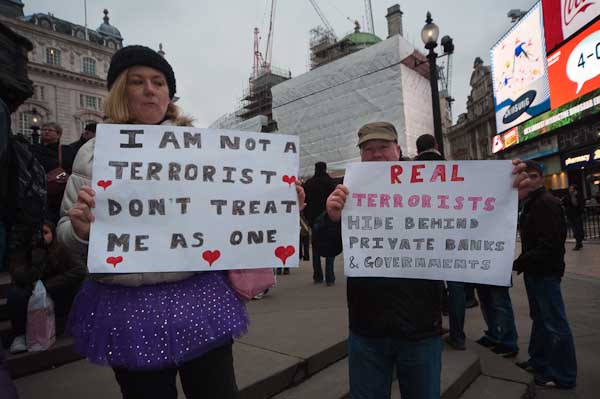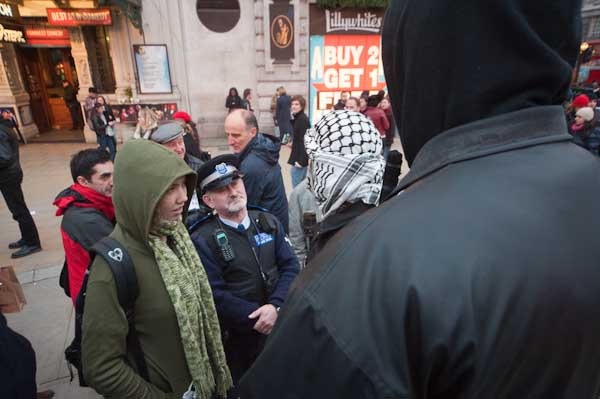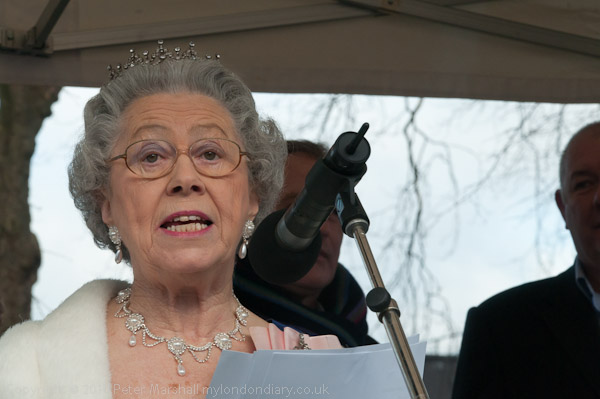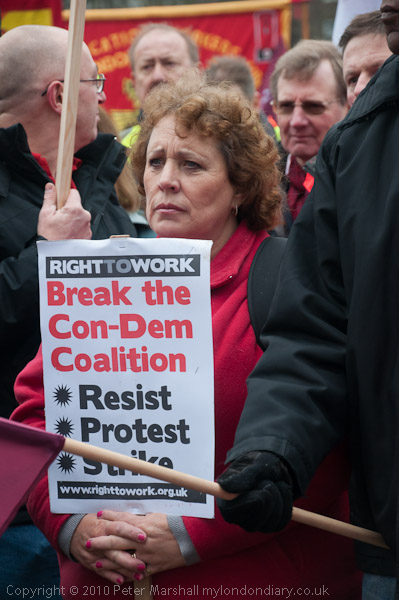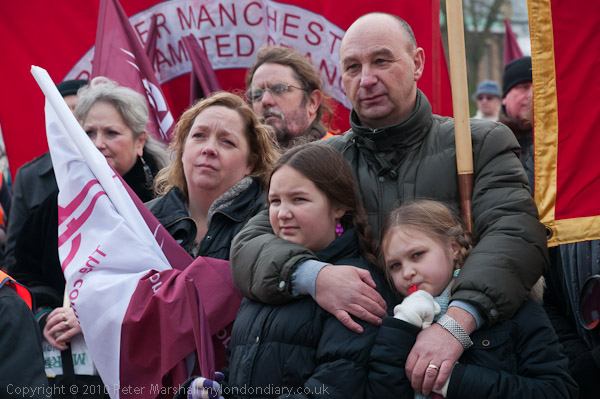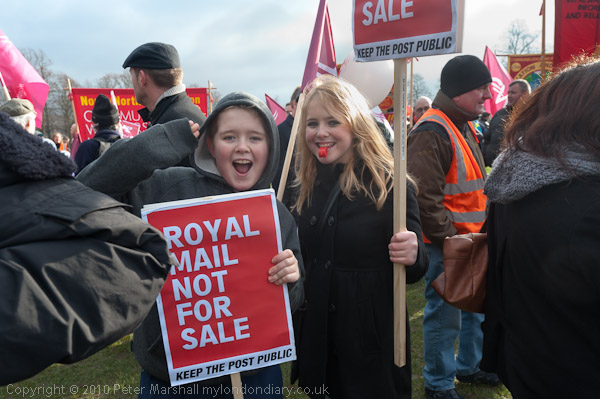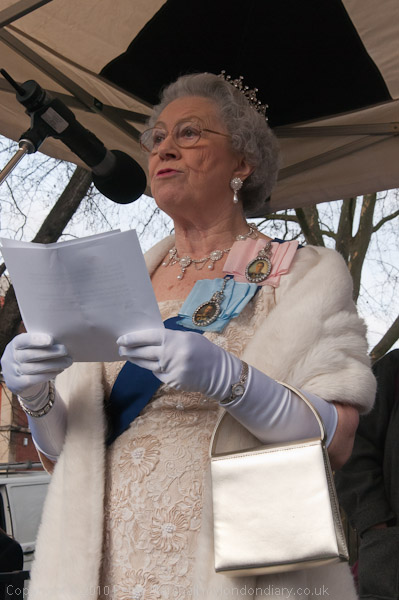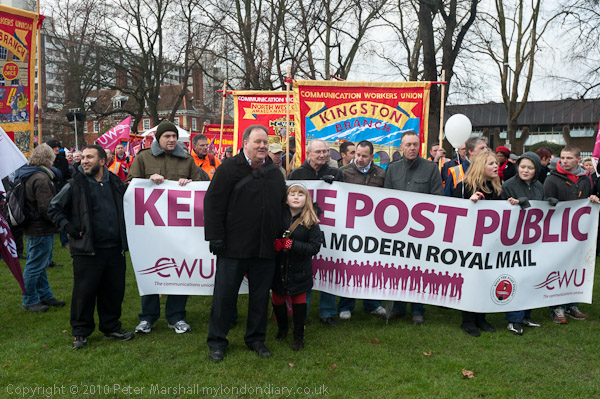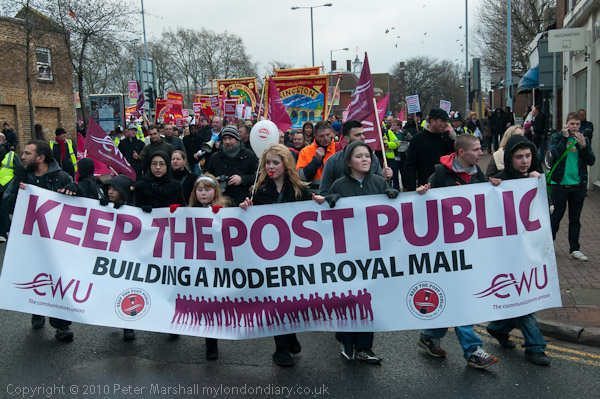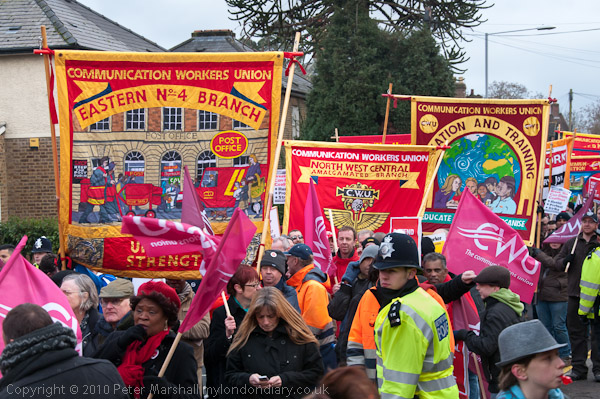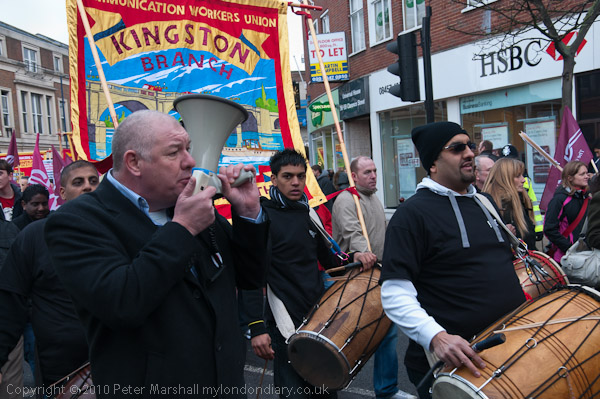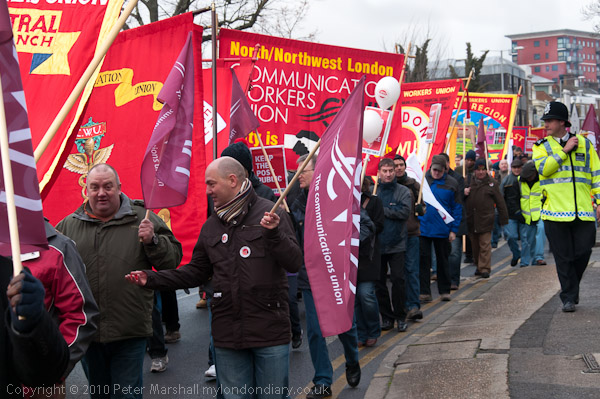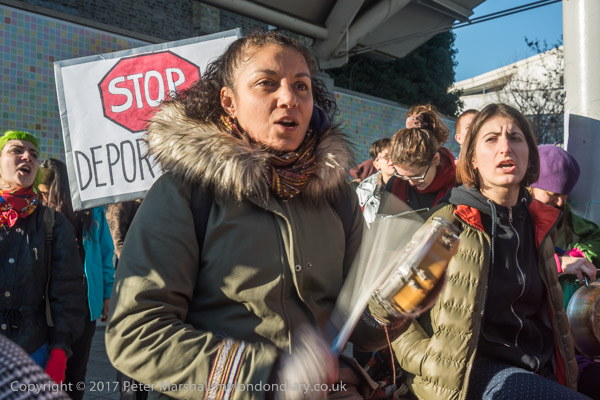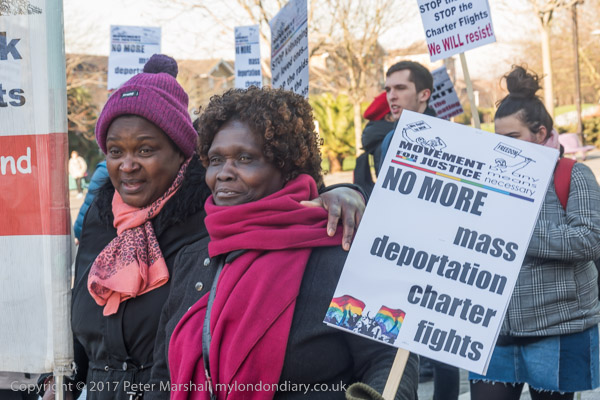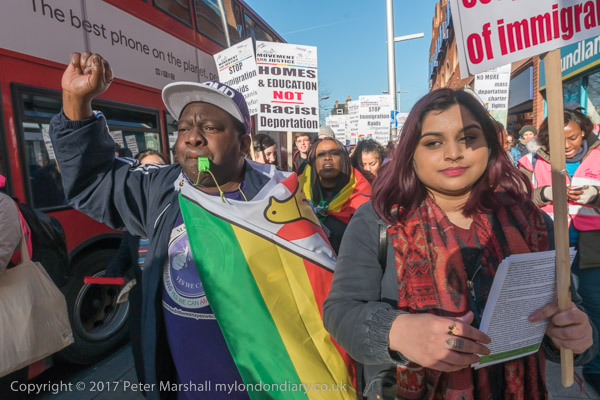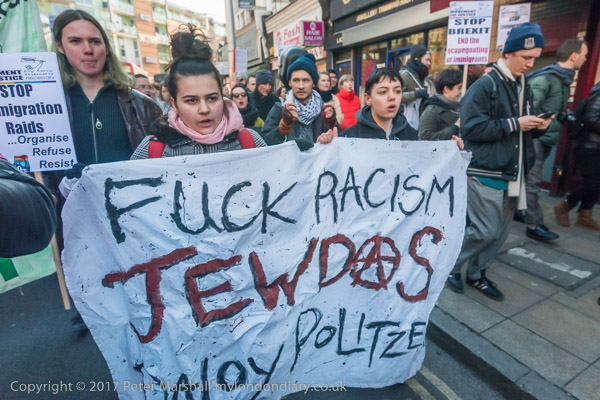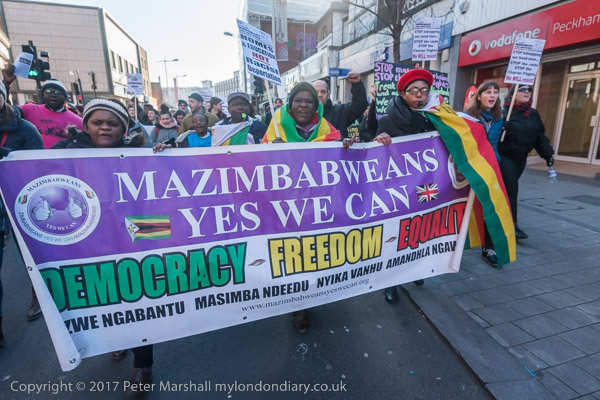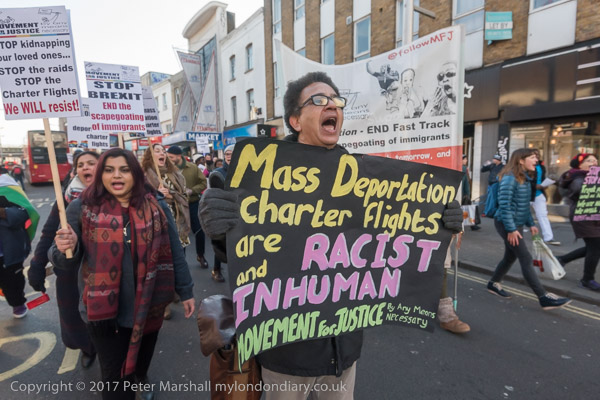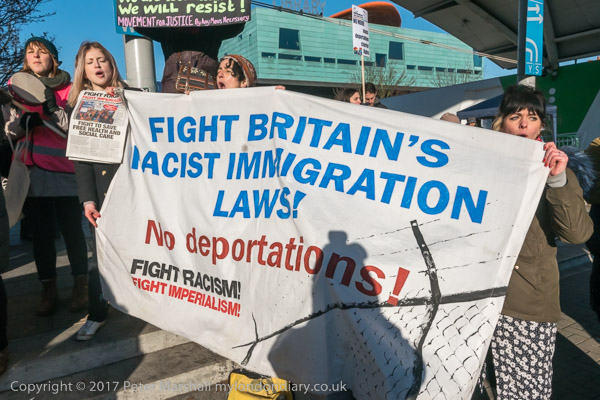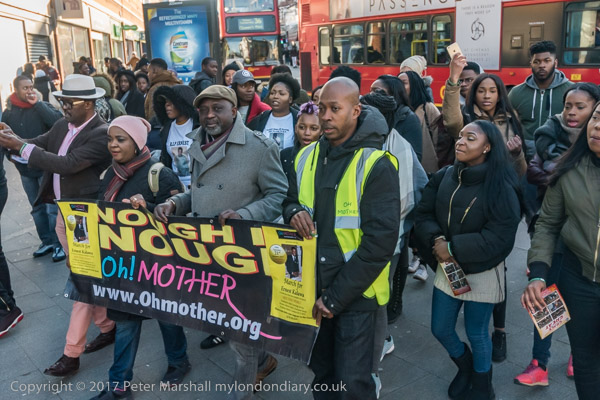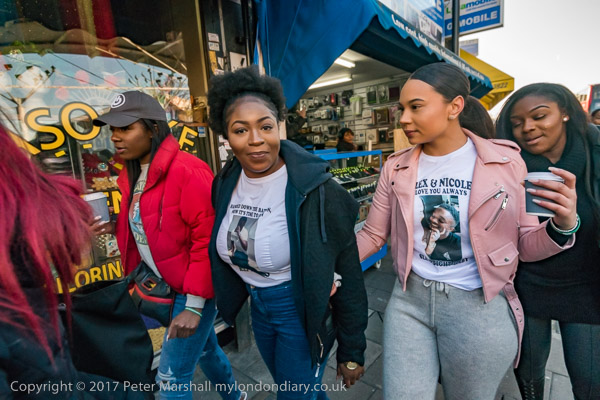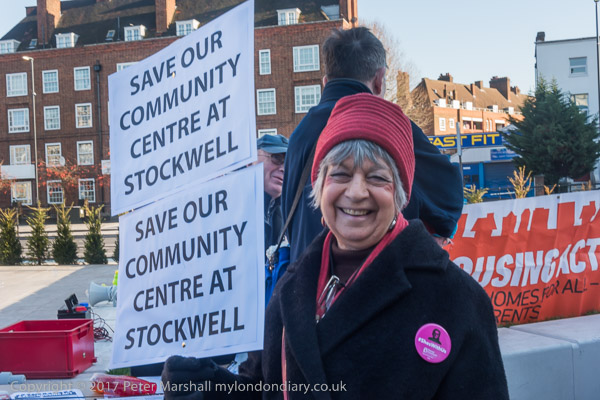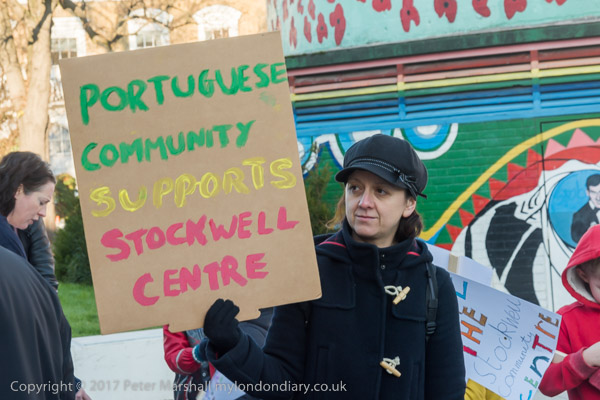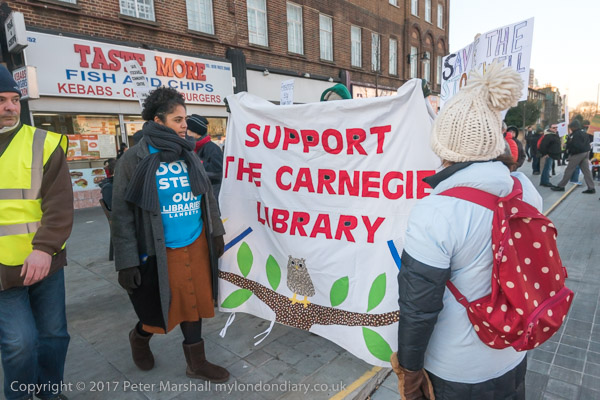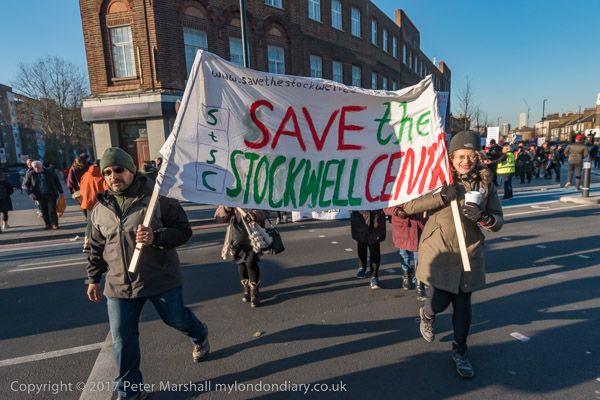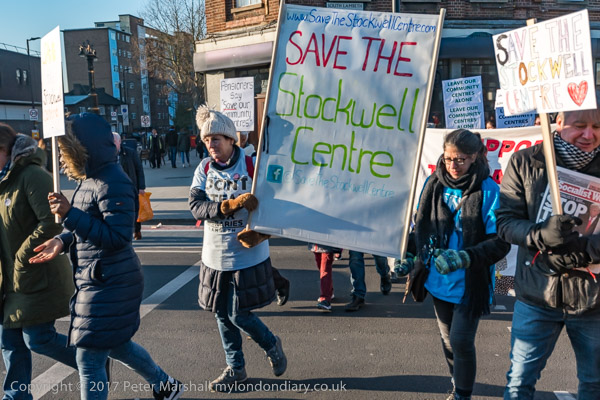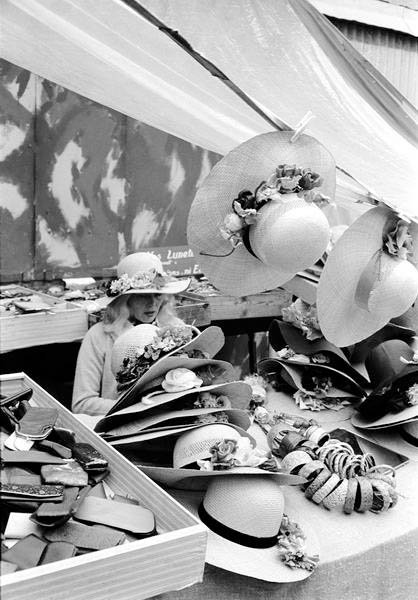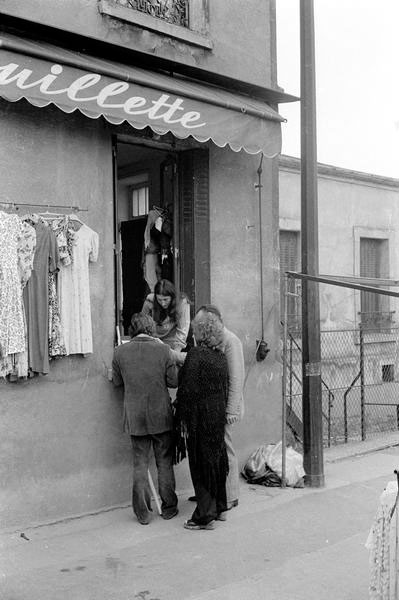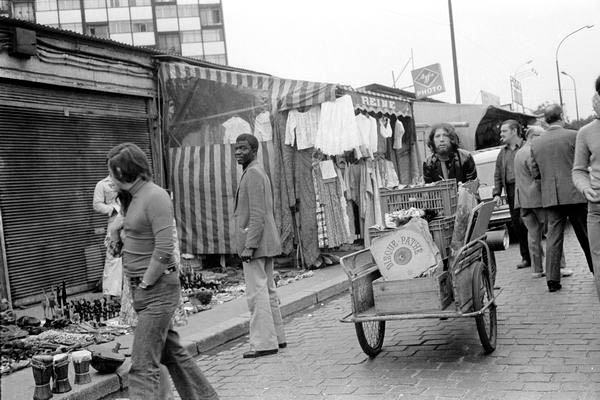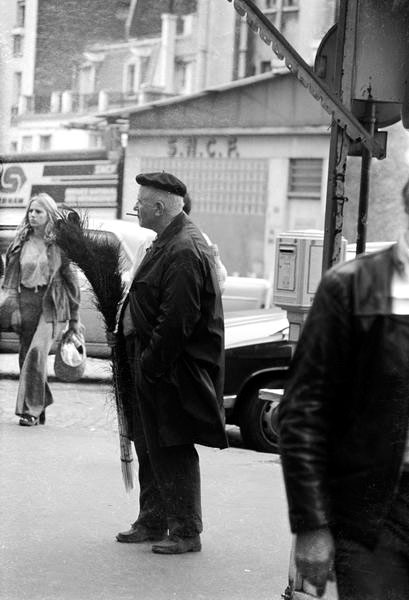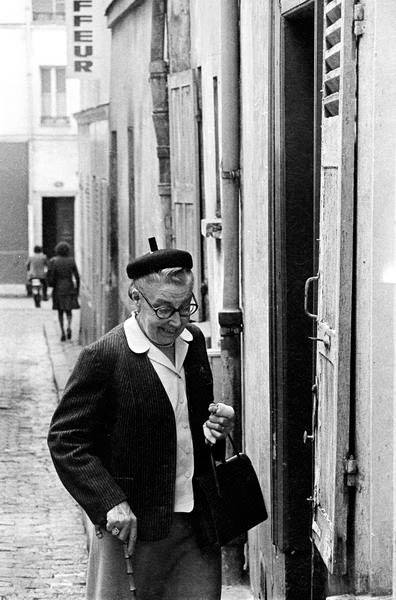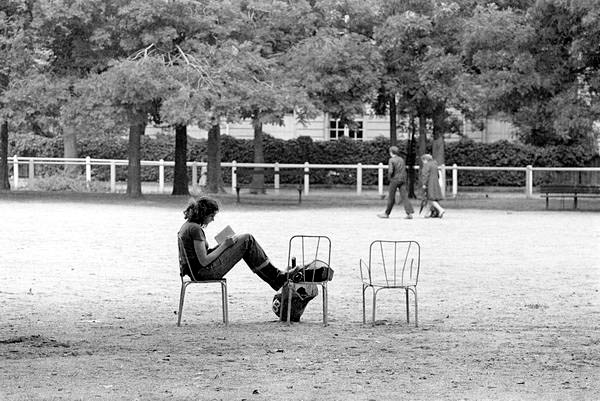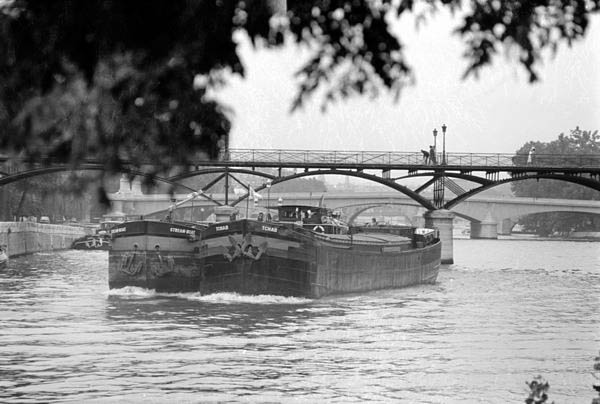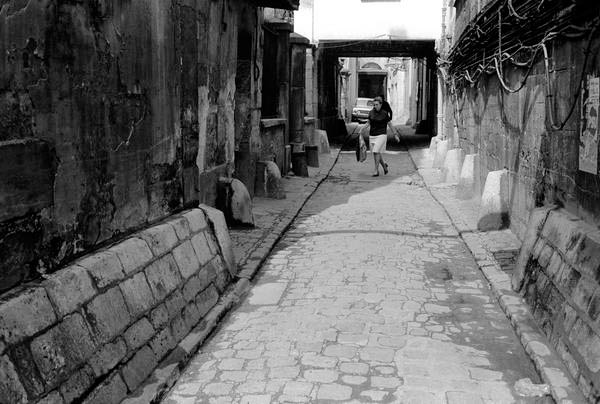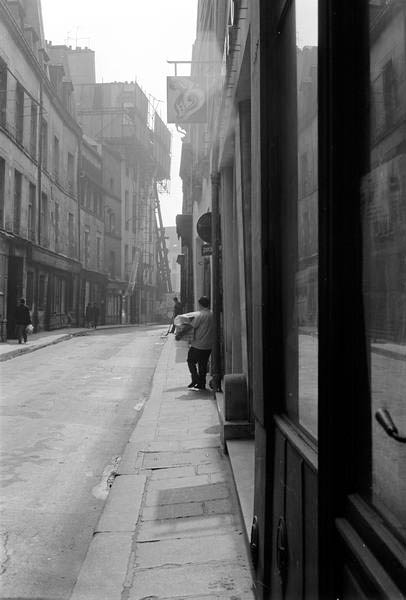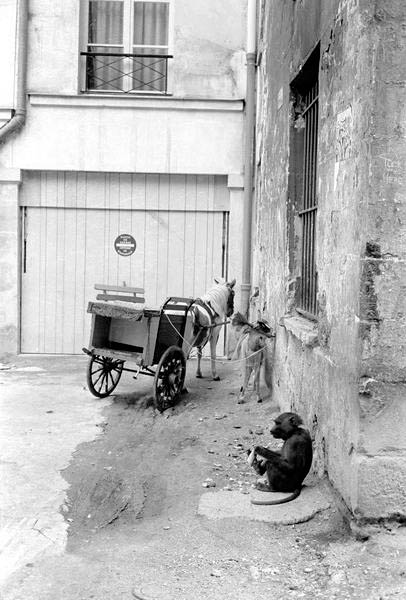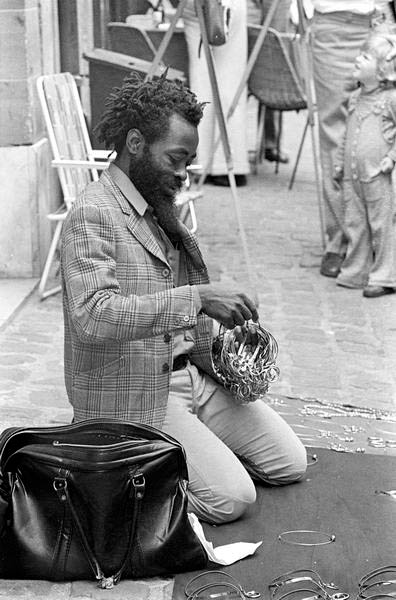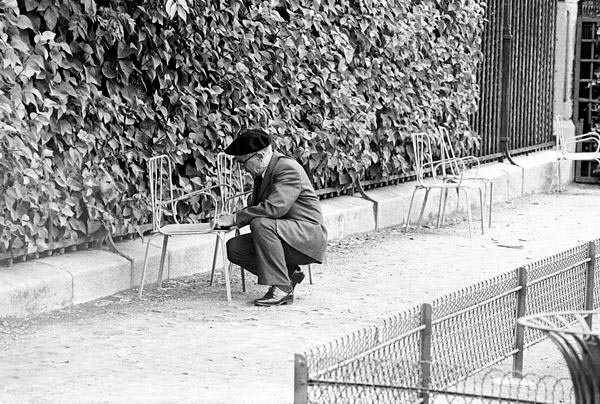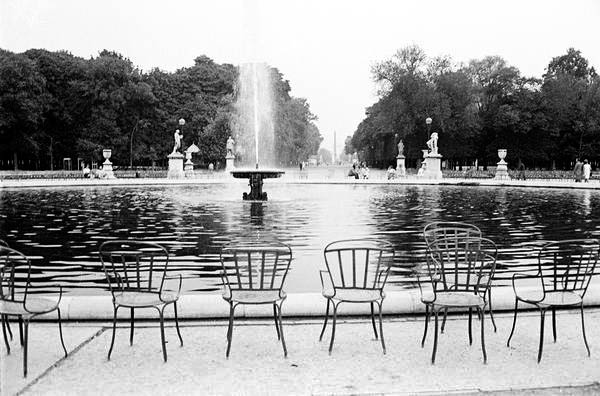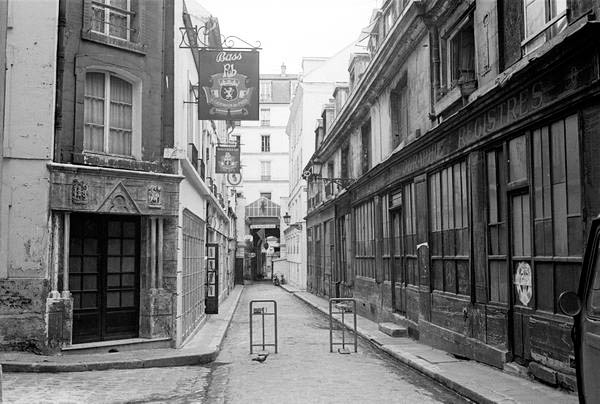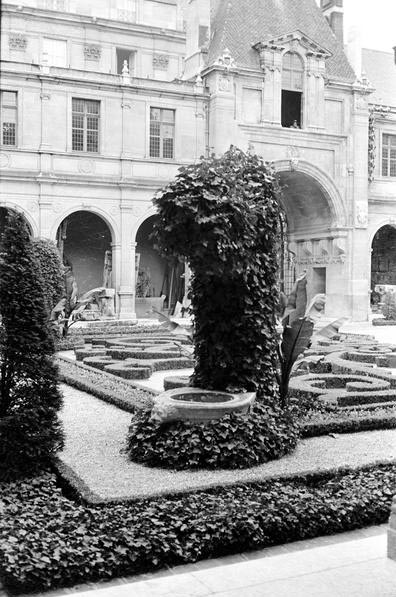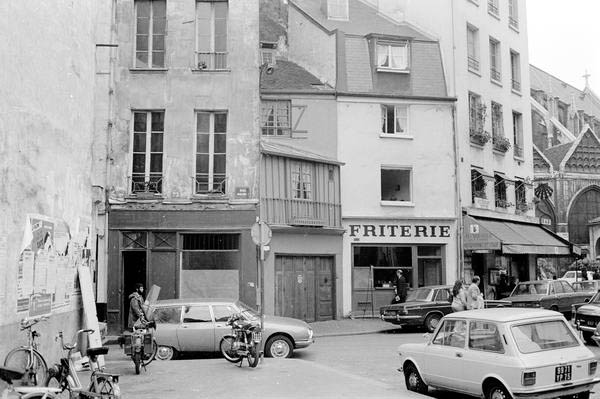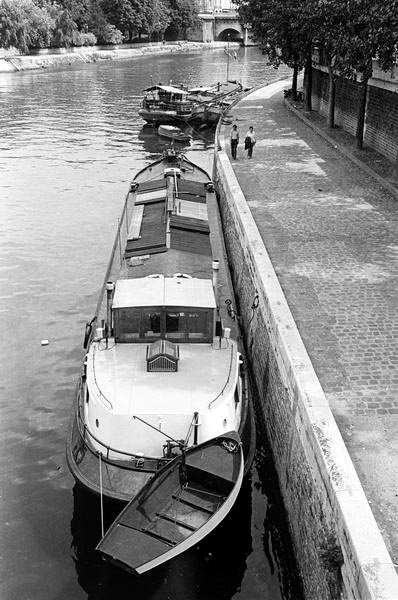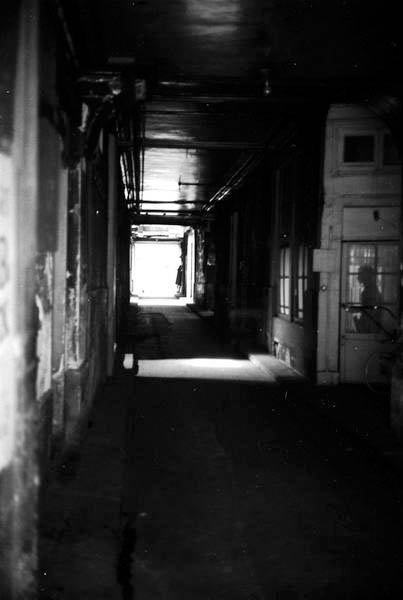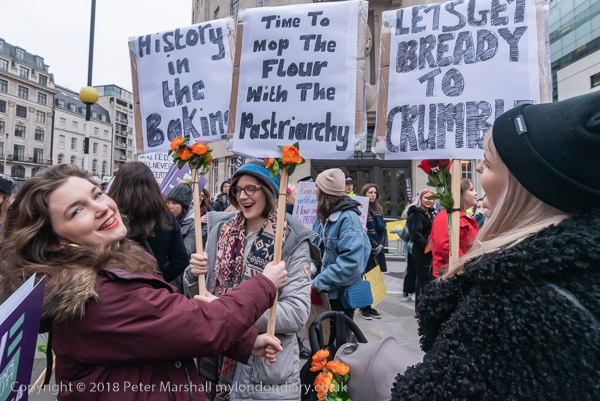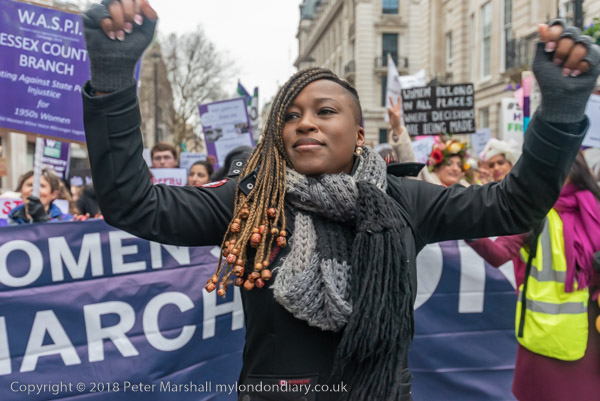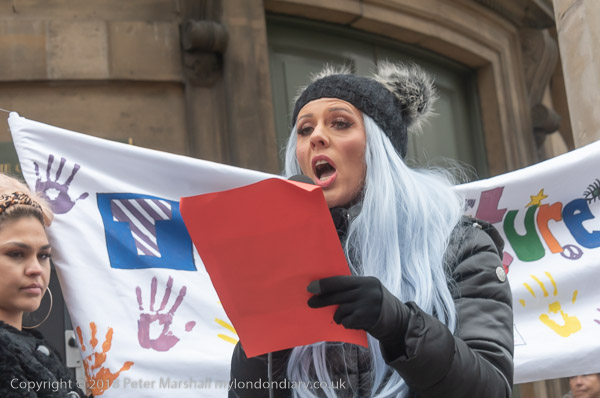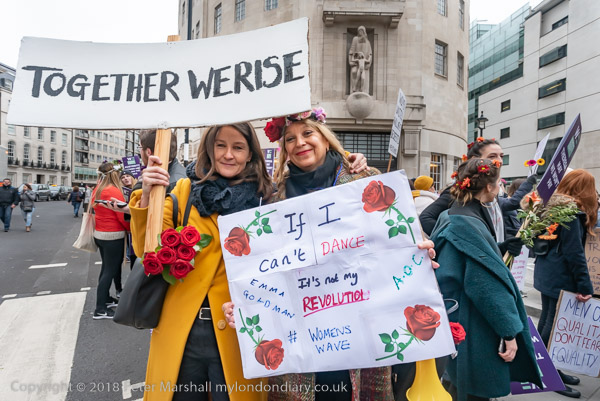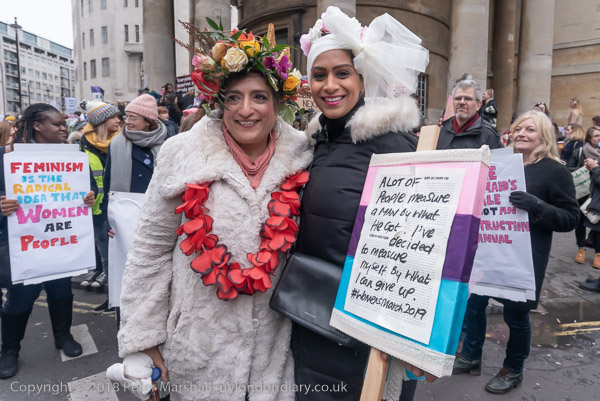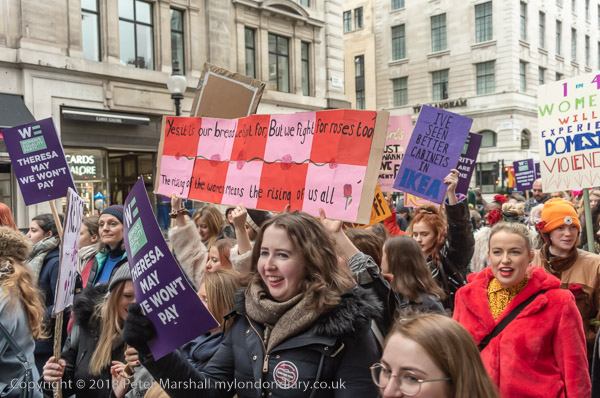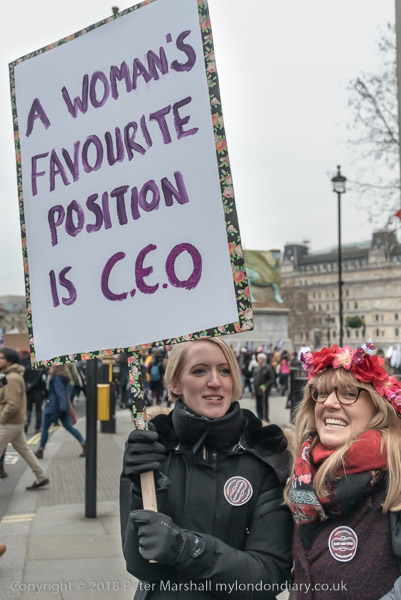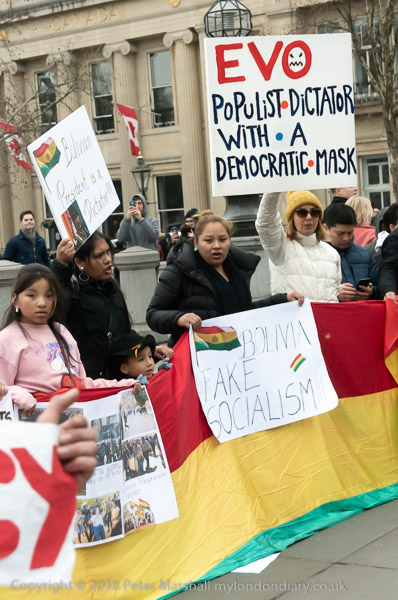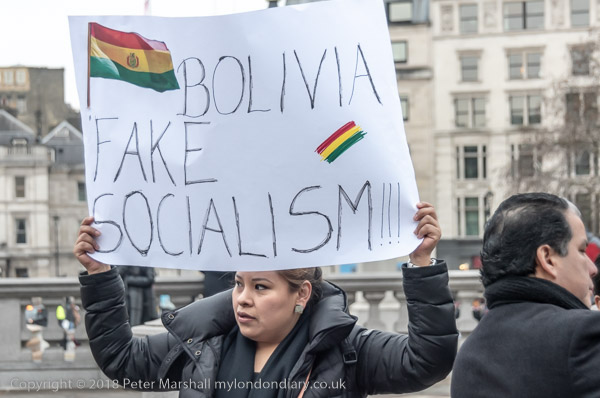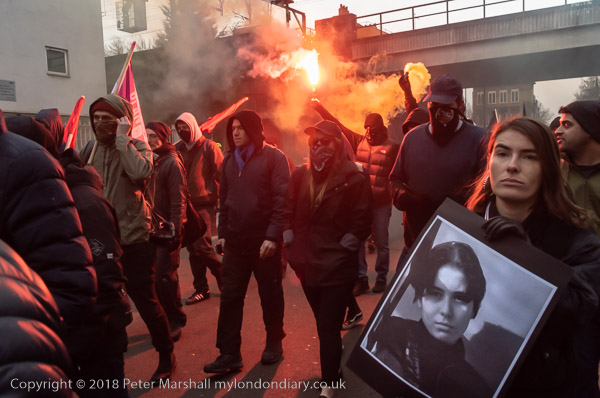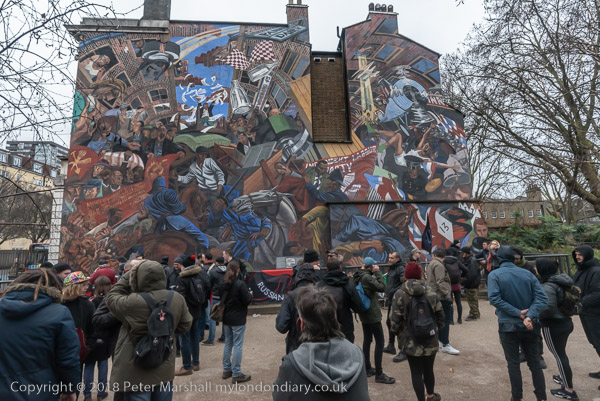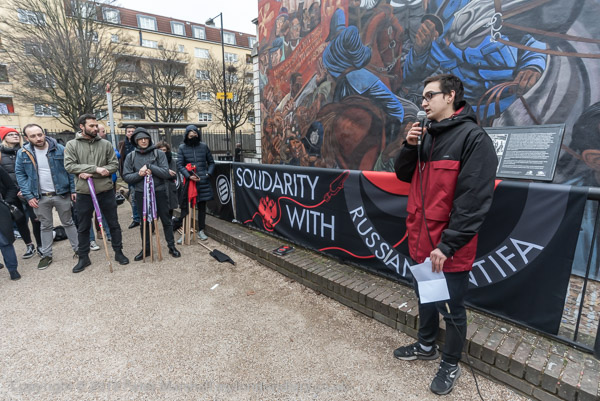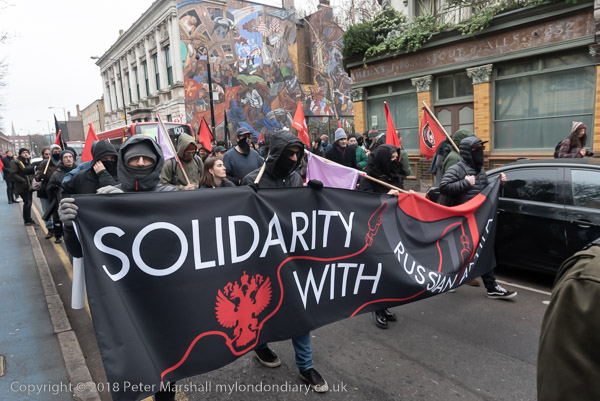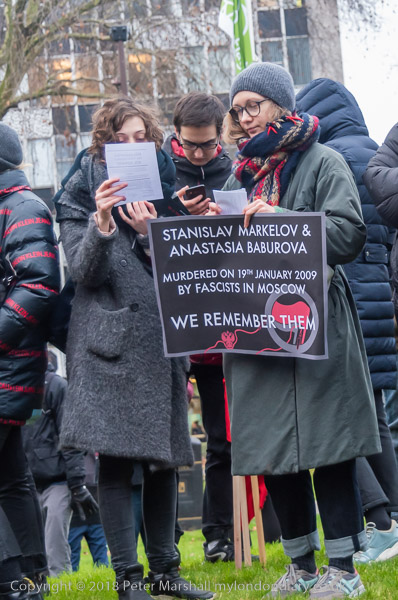Disabled Welfare Reform & Syria: On Saturday 28th January 2012 I photographed two major protests in London, with disabled protesters calling for the dropping of the Welfare Reform Bill and later several groups of protesters outside the US Embassy in Grosvenor Square arguing for various reasons against US or Western Intervention in Iran or Syria.
Disabled Welfare Reform Road Block – Oxford Circus
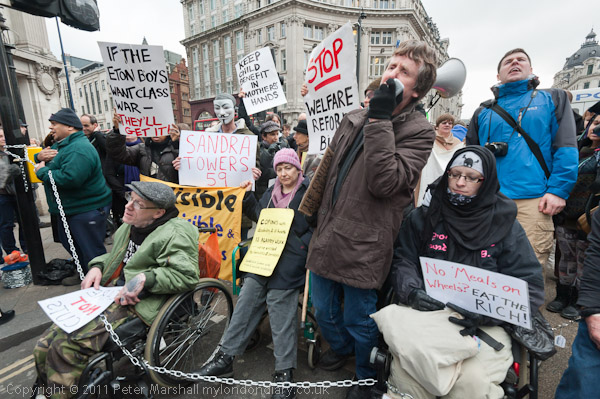
Disabled People Against Cuts, DPAC, protested at Oxford Circus, chaining wheelchairs together & calling for the dropping of Welfare Reform Bill, urging savings cutting tax evasion by the rich rather than penalising the poor and disabled.
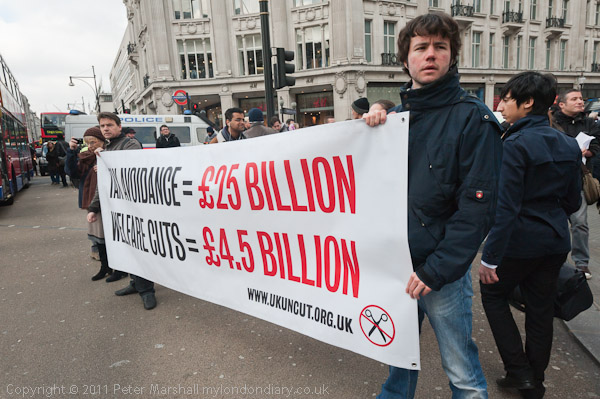
I met with some of the protesters outside Holborn Station and others who had arrived by taxi at Great Portland Street. I’m not sure why they had chosen these two meeting points as they are both – like most Central London stations – without step-free access. London Underground has been painfully slow in providing disabled access.
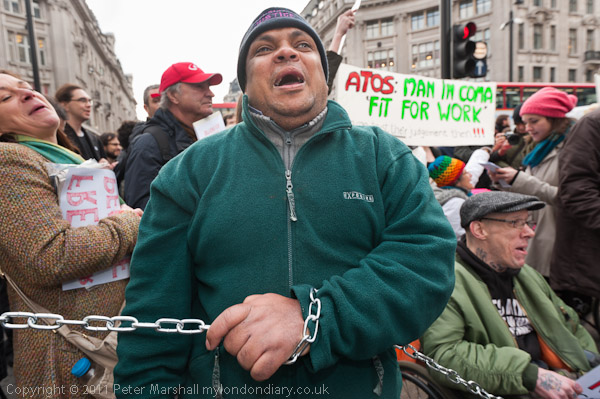
I went with them from Great Portland Street to Oxford Circus where they met up with others who had just begun to block the road, going in a line across the end of Regent Street when the lights changed to allow pedestrians to cross and passing a chain through their wheelchairs which they locked to posts on each side.
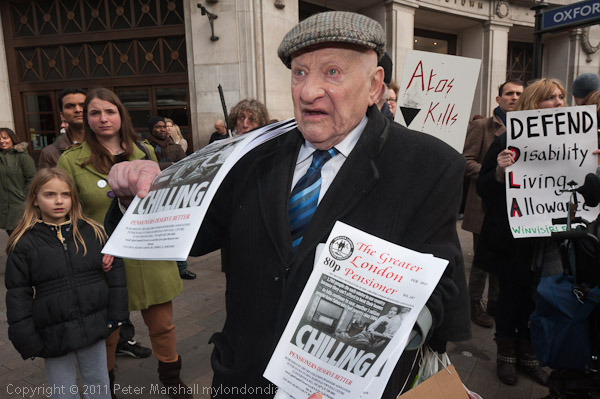
Others walked on the road with placards and banners to support them, but there were enough police in the area to enable them to stop the protesters blocking Oxford Street.
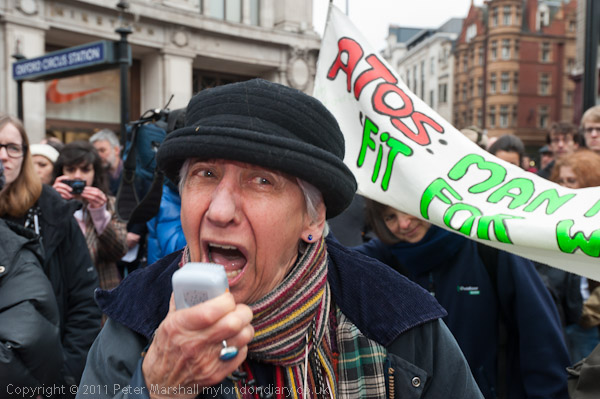
Among groups supporting DPAC’s protest were UK Uncut, the Greater London Pensioners and the women’s groups from the Crossroads Centre in north London who had brought their public address system.
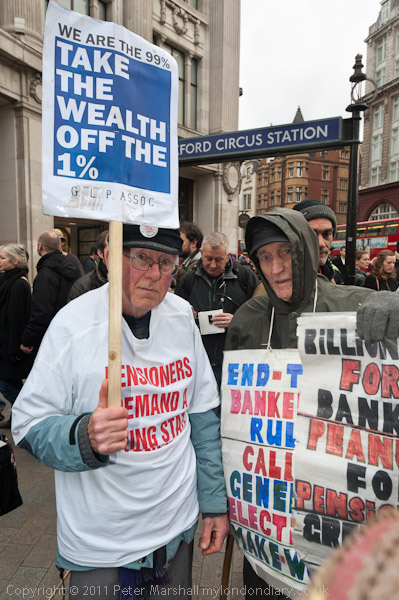
Shortly after the street band Rhythms of Resistance turned up and added their sounds to the protest.
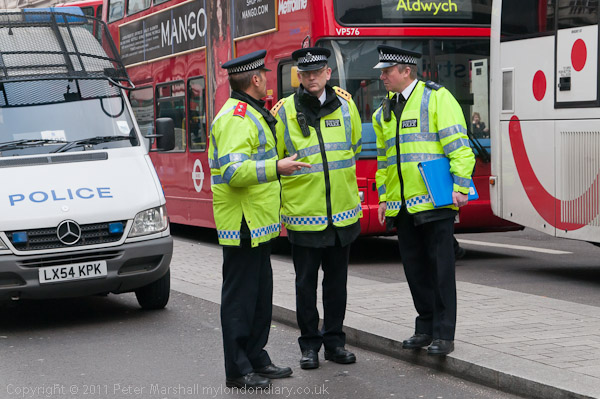
Police had quickly managed to divert traffic on streets to get around the protest and were having discussions about how to handle the protest. A FIT team had arrived to photograph everyone (press included) and TSG officers were standing nearby with bolt cutters. But arresting people in wheelchairs is difficult as police need to supply suitable safe transport.
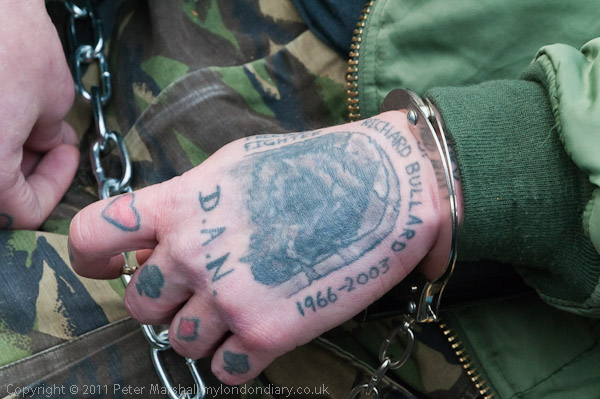
Eventually the officer in charge read out a statement telling the protesters their presence on the road is breaking the law – as of course they knew. He and other officers then went to ask the protesters if they would move. They didn’t and some got out their own handcuffs to handcuff themselves to the chain.
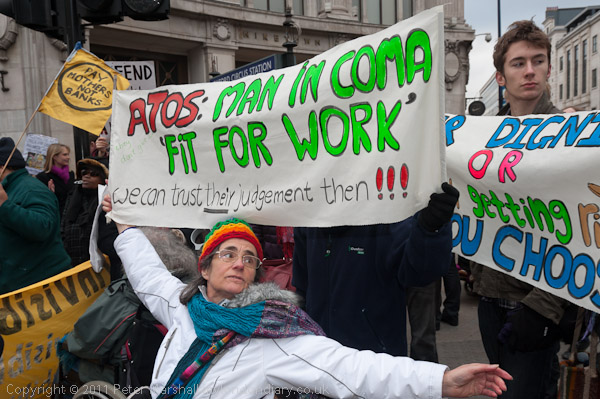
Police kept smiling and talking to the protesters, waiting for them to leave rather than trying to move or arrest them. Eventually after about an hour and a half they did so, having decided they had made their point successfully and it was time to pack up. Probably too nature was beginning to call!
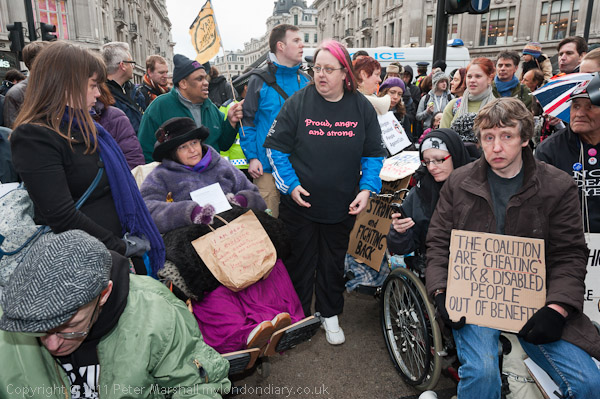
The protest attracted a great deal of coverage in the press for the campaign, while earlier efforts to get their arguments against the bill including earlier less active protests have received very little publicity.
More pictures at Disabled Welfare Reform Road Block.
No War Against Iran & Syria – US Embassy
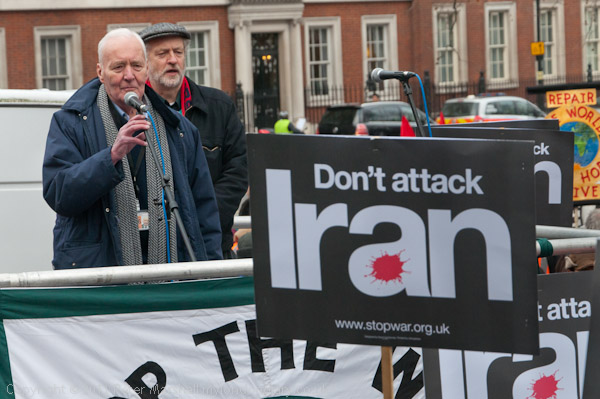
I’d left a few minutes before the DPAC protest ended to walk to the US Embassy in Grosvenor Square where Stop the War were holding a protest against sanctions and war on Iran and Syria.
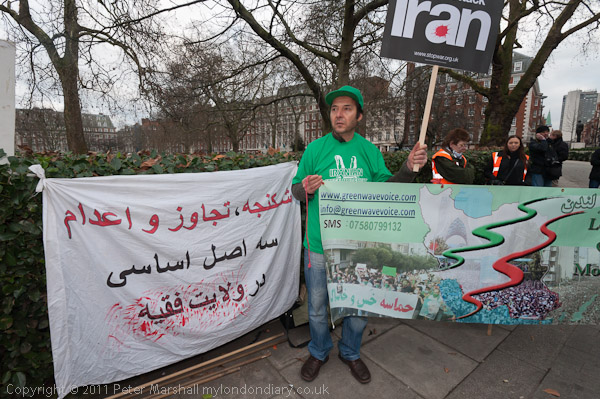
When I arrived I found a very confusing situation with several groups of protesters and some noisy heckling with scuffles with the Stop the War stewards.
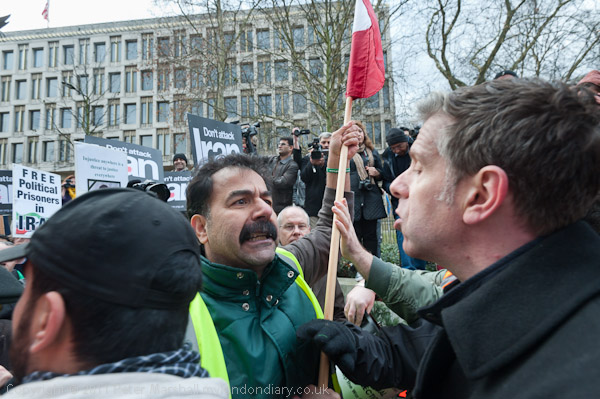
I think everyone there was against US or Western Intervention in Iran or Syria, but some noisy protests which came to a head while Abbas Eddalat of the Campaign Against Sanctions and Military Intervention in Iran was speaking, from protesters representing the Free Iran ‘Green Movement’ who wanted to make a clear statement of their opposition to the current Iranian regime with its religious bigotry and persecution.
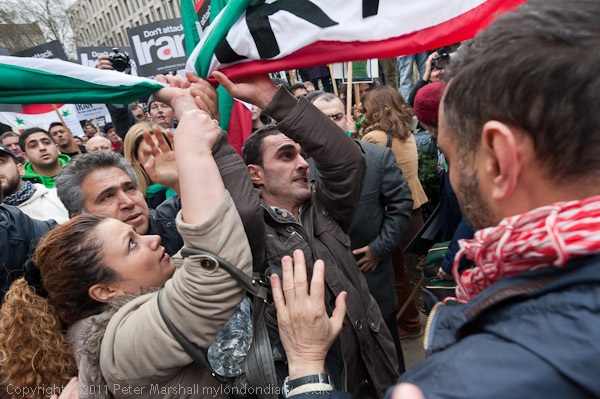
The stewards first tried to argue with them but soon became physical, pushing them roughly away from the protest. Supporters of the Iranian regime joined in along with supporters of Syrian President Asad.
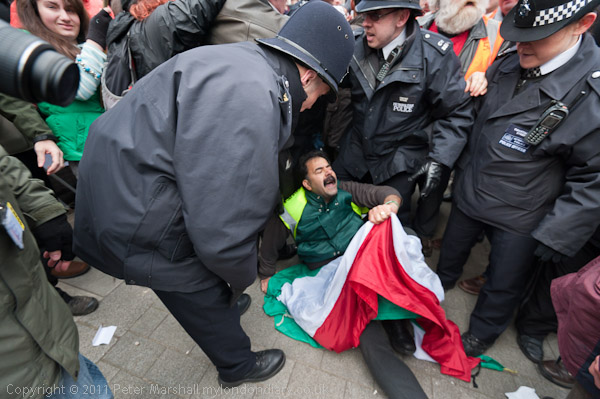
Police seemed bewildered as they tried to sort out the various groups – and there were also some Kurds with a large Iraqi Kurdistan flag.
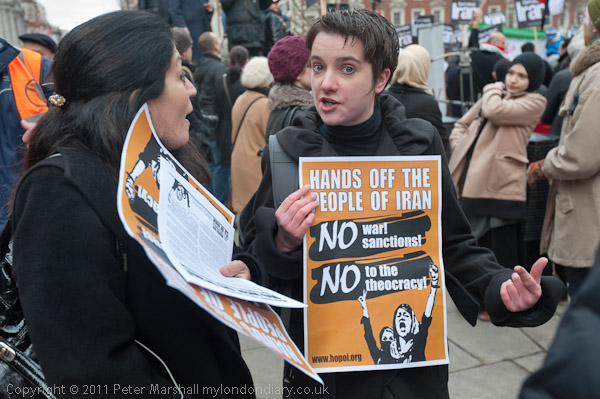
Eventually the Free Iran protesters were persuaded to hold their own separate protest a few yards away in front of the embassy, though some of them rejoined the Stop the War protest later. Another group, Hands Off the People of Iran were also present and handing out leaflets, against Stop the War which has favoured links with supporters of the regimes in both Syria and Iran.
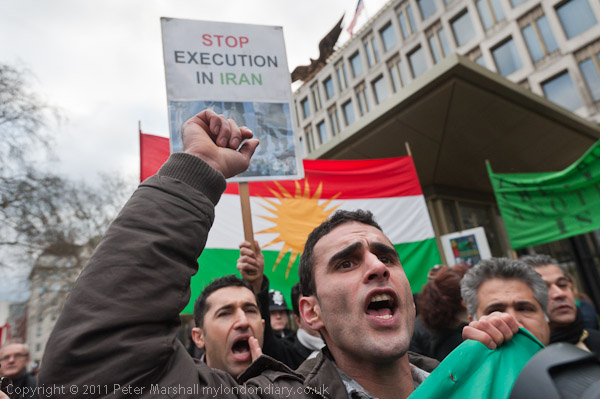
Police briefly held one young man who was wearing the current Iraqi flag but then released him, with a police officer trying to prevent press taking pictures, saying “He has a right to privacy” – which clearly as I told the officer he has not under UK law when protesting on the public street.
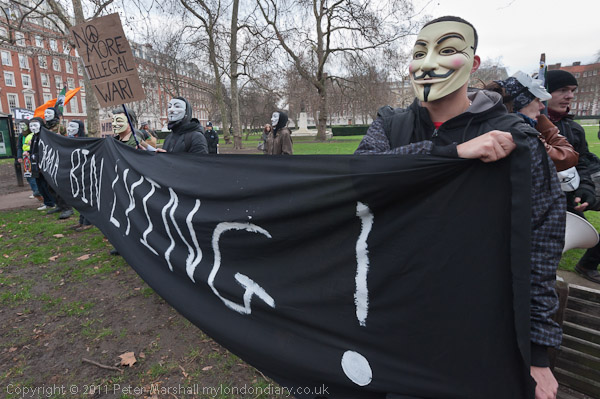
Then there were ‘Anonymous’ in their ‘V for Vendetta’ masks protesting on the other side of the hedge around the gardens to the main protest, and later Stop the War stewards again sprung into action to stop the free expression of dissent when pro-Asad Syrians began their own protest.
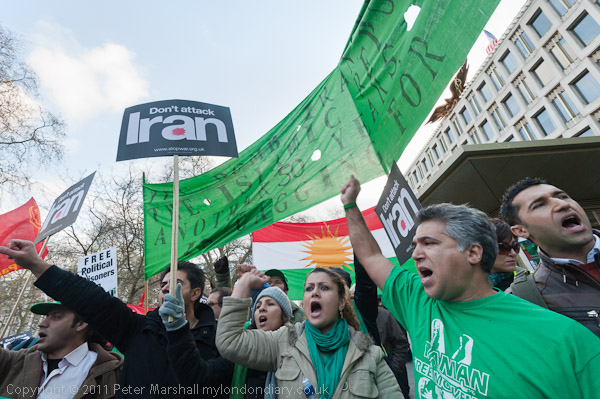
Various speakers including Tony Benn, Lindsey German, John McDonnell and others made a clear case against any Western intervention at the main rally – and I give some of their arguments on My London Diary.
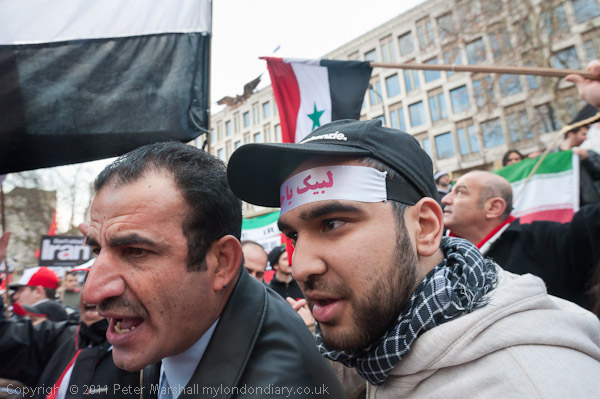
More at No War Against Iran & Syria.
Flickr – Facebook – My London Diary – Hull Photos – Lea Valley – Paris
London’s Industrial Heritage – London Photos
All photographs on this page are copyright © Peter Marshall.
Contact me to buy prints or licence to reproduce.
